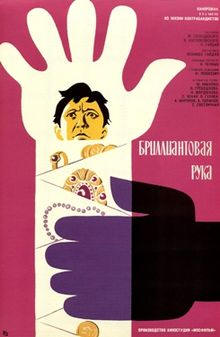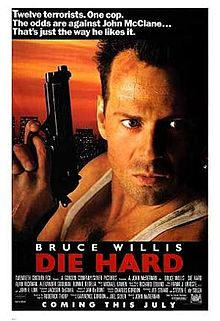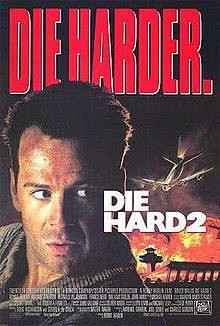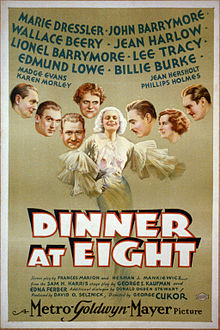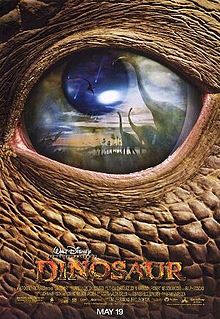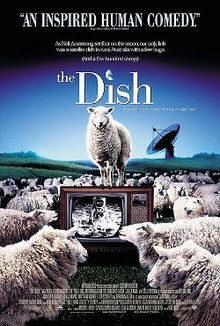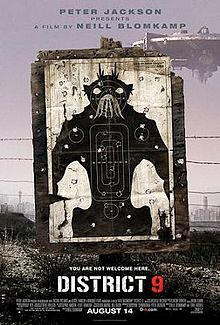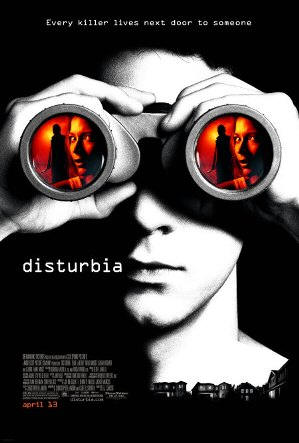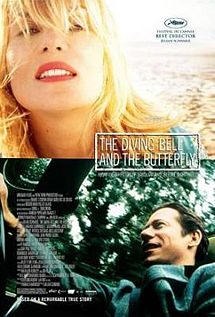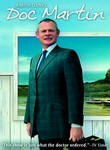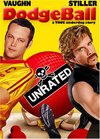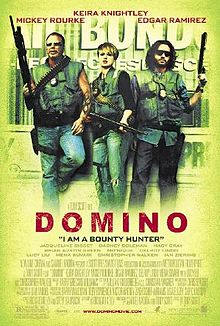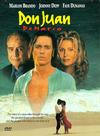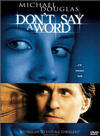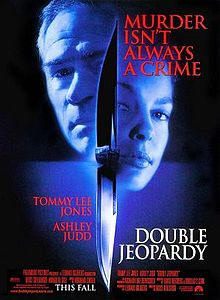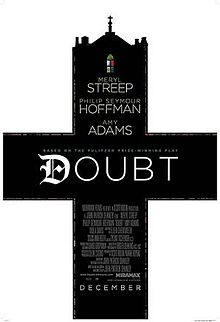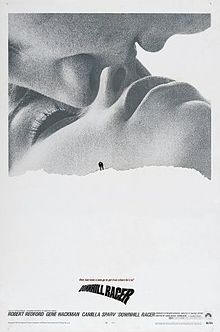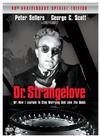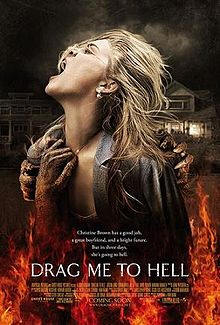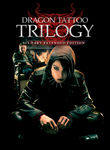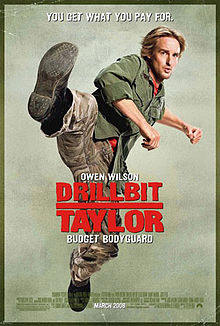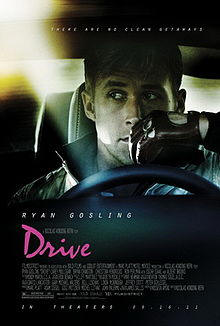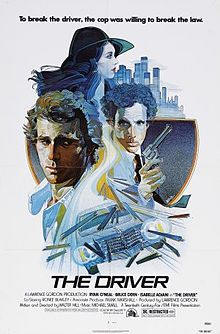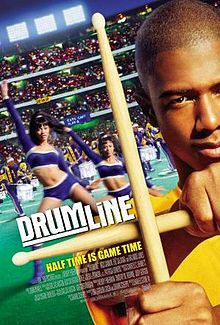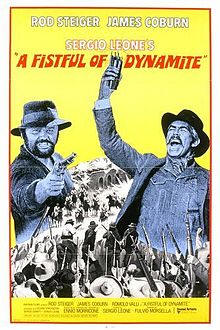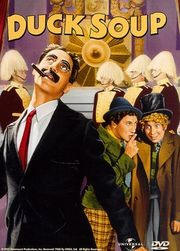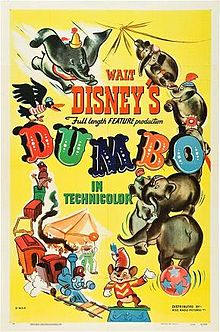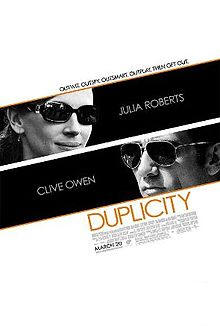|
Movies we've seen © 2004-2013 by John Varley; all rights reserved |
D
|
The Da Vinci Code (2006) One of the nice things about living in Los Angeles is that everything plays here. The most obscure art movie, the latest epic from East Timor ... everything. We stumbled on this one at a little neighborhood theater in Los Feliz Village, bargain matinee $4.50, and thought, what the heck? Okay ... it's kind of long, and it's mostly about people standing around solving puzzles, at least when other people aren't chasing them and shooting at them. There's some nice location photography; you'd almost think they'd got permission to shoot in the Louvre! But under it all there is an interesting theological theme. Myself, I don't care if Jesus left little bastards all over Palestine and was crucified because he didn't pay child support. But if the Catholic Church ever gets wind of this theory ... hoo boy! Somebody ought to write a book about this. IMDb.com The Dam Busters (1955) I have a connection with this film, in that it was directed by Michael Anderson, the man who did his best to make a good film out of the remains of my script, Millennium. Michael directed the Best Picture Oscar-winning Around the World in 80 Days. He has some wonderfully wacky stories about Michael Todd, the certifiably insane producer. He has several science fiction movies to his credit, including Logan’s Run and 1984. He also directed Orca, of which the IMDb has this to say: “The killer whale was portrayed by a combination of stock footage taken at Marine World in Redwood City, California, and an animatronic whale which was filmed off the coasts of Malta and Newfoundland.” It’s a damn lie. Michael had us all in stitches telling the story of how they activated the animatronic critter off the coast of Malta on the first day of shooting … and it caught fire, burned, and sank, never to be seen again. There he was, obligated to make a (completely silly) movie about an orca, and he had no orca. That he managed to shoot around it and end up with a movie at all was a miracle. This movie was the one that put him on the map. It was a huge success, and has appeared on many Best WWII Films lists. It tells the true story (much more accurately than your typical cinematic “true story”) of the RAF’s 617 Squadron, who were given the job of blowing up the dams on the Ruhr. To do this they had to fly their Lancaster bombers at 60 feet, precisely, and release the 5-ton bombs precisely 600 feet from the dams, from where they would skip across the water like tossed flat rocks and concentrate all their explosive power right up against the structures. All this while flying into formidable flak from the ground. It was well-nigh impossible, but they did it. The film shines in another area, too. In your typical action adventure, after pulling off the big caper the end credits are only minutes away. Here, they suffer (in British stiff-upper-lip fashion) over the many crews lost that night. The tension is in the attack, but also in the men who stayed behind and monitor it all, agonizing over sending so many men to their deaths. It is that rarity, a film that shows in great, scientific detail just how this was all put together, from the inventor, Dr. Barnes Wallis, skipping golf balls in his back yard, to larger tests in water tanks, to a series of failures in the ocean. It shows how you can keep your altitude at 60 feet without radar, and how you determine when you are at the correct distance. In fact, the film goes on for 90 minutes, covering development and training, before anyone flies into action. But what action! The SFX were primitive, but it just shows you how much you can accomplish if you know how to build tension. The last half-hour was so good, in fact, that George Lucas used it as a sort of template for the final scene of Star Wars, the attack on the Death Star. So good that Peter Jackson is apparently at work on a re-make. I’m sure it will be a lot more dazzling than the original, but listen, Peter, if you don’t lay it out meticulously, step by step, as Michael Anderson did, you’ll end up with just another ho-hum Stars Wars clone. Filming must have been a challenge. It was only 10 years since the end of the war, but all the old Lancasters (in my opinion, an exceptionally ugly aeroplane) were mothballed, soon to be scrapped, and had been replaced by jets. But the RAF tuned up four of them, and flew them right down on the deck. They even modified the bellies as the 617 Squadron’s Lancs had been to accommodate the gigantic bombs. The movie was partly based on a book by Paul Brickhill, who was actually a prisoner in Stalag Luft III, and wrote the book The Great Escape. The other source material was a book by the leader of the Squadron, Guy Gibson, and something from that book is more than a bit jarring. Gibson actually had a black Labrador called—no shit—Nigger. The first time he shouts “Here, Nigger!” you want to clean out your ears, sure you’ve misheard. And every time thereafter, it startled me. You just don’t get used to it, it continues to make you wince. For an American release, some time later, the name was re-dubbed as “Trigger.” Now, I detest censorship in any form, and can’t really approve of that ... and yet, damn, it sounds so awful. Peter Jackson has said he is facing a no-win situation concerning the damn dog. Don’t call him Nigger and be accused of altering history, or go with Nigger and offend everybody. Tentative solution: It seems Gibson often called the pooch “Nigsy.” That might work. (One historical inaccuracy, according to the IMDb: In the movie, Nigger is killed by a hit-and-run driver. In actual fact, the car’s driver and a passenger were injured when he swerved to avoid the dog.) (One more bit of trivia: Nigger was played by a dog called … Nigger.) IMDb.com The Dam Busters (UK, 1955) I have already extensively reviewed this movie, and you should find that rather lengthy essay above this one. After seeing it yet one more time, in 2012, I had to add just a little bit more, and that concerns the dog, N*gg*r. WTF! My word processing program just censored … well, okay, it didn’t, but I’m afraid that may be the next step in the march of political correctness. I was reading some of the comments at the IMDb, and wasn’t too surprised that at least half of them concerned the name of the black Lab in the movie, whose name in real life as well as the part he played were both Nigger. What sort of stunned me was that almost no one spelled the word out. We got N****r, Ni**er, and of course, N-word. What is this? Why is it that for some reason many websites have a scanning tool that looks for words like fuck, shit, cunt, motherfucker, nigger, and retard, and won’t post your comment if you spell them out? But it’s perfectly okay to write f*ck, sh*t, c*nt, m***********r, N-word, and now, R-word? Ask yourself this. When you are reading the last sentence, silently to yourself, did you think eff asterisk cee kay? You did not. You thought FUCK. And your mind somehow survived this assault on your sensibilities. When you hear someone on TV say “N-word,” you know the word is nigger. How is it that these words are so poisonous that not only can you not SAY them—and I have no real problem with that, when it comes to TV, though I think it’s mighty silly—but you can’t even SPELL them? Not long ago some very foolish black leaders … sorry, African-American leaders, and their white sympathizers, held a media event where they “buried” the N-word (they couldn’t even say it aloud) in a real coffin. The idea was that this word should never be used again. It should be expunged from the language, wiped from all the dictionaries. I presume that would be retroactively, in trashy books like Huckleberry Finn … which has recently had an expurgated edition published, for schools. One of the ironies among many ironies was, of course, that in most poor black … African-American neighborhoods, the word nigger is second only to motherfucker in common spoken usage. But let’s bury the f*cker anyway, okay? Dude, I realize the words are offensive. Anyone who calls someone a retard, as that filthy cunt Ann Coulter recently called Obama, is beneath contempt. But in the story I read about that, the word retard was never used. I’m not saying we should pepper our speech with them, and any white person who calls someone a nigger deserves to get beaten to a bloody pulp. But you can’t SAY the word? In a quote? You can’t write it? You want to go the 1984 route and pretend the word never existed? That way lies insanity. No, insanity is already here. Where we go now is beyond my powers of reckoning. Lord, do we ever need George Carlin again. IMDb.com Damn Yankees! (1958) Directed by Stanley Donen and George Abbott. Starring Gwen Verdon and Ray Walston. Choreography by Bob Fosse. Do I really need to say more? Well, maybe just a little. This seems to be the only time Fosse and his wife of 27 years, Gwen Verdon, danced together on film, in the number “Who’s Got the Pain?” She was his muse and the first person to perform most of his signature moves, even after they separated. This was Fosse’s second choreography assignment, and his unique style is already apparent. IMDb.com The Dancer Upstairs (2002) Directed by John Malkovich, book and screenplay by Shakespeare. No, not Will. Nicolas Shakespeare. The story is based on the Shining Path anarchist/communist/guerillas who terrorized Peru for many years, as depraved and murderous a group as anyone since Pol Pot’s Khmer Rouge regime in Cambodia. Malkovich has a good directorial eye and he avoids a lot of plot clichés, but he needs to learn a thing or two about pacing. It dragged at times, and was at least 20 minutes too long. And in the end it didn’t amount to much. IMDb.com Danny Deckchair (2003) I don’t know how you pronounce “Capra” in Australian, but that’s the word here. Some people can’t take Frank Capra’s corny populism and eternal optimism. To me, it’s a tough trick to turn, but if you can do it, I like it. I’m not saying I believe it; I just like to think for the length of a movie that the world might be that way, every once in a while. This story was inspired by actual events. It really is possible to soar into the air by tying enough helium balloons to a lawn chair and survive it. Other than that, there’s no connection with the dude who actually did it in Long Beach. I liked Miranda Otto (Eowyn in The Lord of the Rings trilogy, soon to be in Spielberg’s War of the Worlds) and Rhys Ifans. IMDb.com Dante’s Inferno (1935) We think we have epic films today, with all the CGI and other special effects to flesh out sets that barely exist in real life. I am still sometimes surprised to see just how gigantic scenes could be in the old days, when there was nothing available but some double exposure to combine several scenes of the same extras into one shot. This film is famous for its ten-minute creation of Hell, inspired by the engravings of Gustave Doré. Here are the mind-boggling numbers, from the IMDb:
And it’s not just the Inferno scene. All the sets are massive and well-designed, great to look at in B&W. Spencer Tracy is a schemer who wanders into an amusement park, where the least successful tip is Dante’s Inferno, a dry discussion of the sins we should avoid. Tracy is a natural spieler, and soon is drawing in the crowds. In a few years he is an amusement park mogul, a sort of anti-Disney. Then a building inspector tells him his first project, the new and improved Inferno, is unsafe. He buys the man off, and sure enough, it all comes crashing down, looking as if it must have killed a lot of people. There is a trial, and his loving wife perjures herself (ensuring her eternal seat in the Eighth Circle of Hell; not such a bad spot, as you can see Satan from there) to save his neck, But then she leaves him. He still doesn’t get the message. He builds a huge gambling/party ship, and hires winos off the street to run it. Sure enough, it’s soon on fire, and he gets his chance at redemption by being a hero. So, I knew the redemption was coming, but I thought it would be sooner than the last 30 seconds. He says he’s seen the error of his ways, he’s reformed, but how will 20 years in Sing Sing affect all this? It’s too damn neat. But the movie is well worth watching in most ways. The collapse of the Inferno is spectacular, as is the fire aboard the ship. And as an added attraction—at no extra charge to you, folks! step right up!—is a shipboard dance by one Rita Cansino, age 16, soon to become Rita Hayworth. Her first movie role. IMDb.com The Darjeeling Limited (2007) I know things aren’t going well when I begin mentally writing my review 30 minutes into the film, and leafing through my mind’s thesaurus seeking synonyms for pretentious, boring, and just plain bad. This is written and directed by Wes Anderson. I liked his The Royal Tenenbaums well enough, and thought Rushmore was very good. Then we rented The Life Aquatic with Steve Zissou (one of the all-time worst titles) and thought “What the fu-….???” This is another one of those. Story: Three brothers are on a train in India, seeking spiritual enlightenment. Like so many idiots who go to India, they seem to think they can walk into a temple and order some, like at Starbucks. “I’ll have a double enlightenment, please, in the tall urn, easy on the spirituality.” People seem to think Indians are a particularly spiritual people. Let me hip you to something, my friends. Indians aren’t any more spiritual than anybody else. It’s just that their vast zoo of belief systems is so exotic-looking to Westerners that we feel they must have something special going. Not so. They’re just as fucked up and clueless as we are. Oldest brother (Owen Wilson) starts every other sentence with “Let’s make an agreement.” Translation: “Here is what I want to do, and therefore you want to do it, too.” The other two schlubs go along, as they have all their lives. And that’s about it. If they were amusing I might enjoy watching them, but they’re not. Here’s the kind of people they are: When they are thrown off the train for entirely good reasons (I wouldn’t have stopped the train before I threw them off), they throw rocks at it. I disliked everything about them, on every level. Here’s just one example. The chances of me liking a man who wears $3000 shoes to the incredible poverty of India are very slim. The chance of me liking a man who tells me his shoes cost $3000 is zero. The only thing that kept me going was the sights and sounds of India, and of the train, which is very nice (much nicer, I suspect, than any real train in India). But I could have gotten that from a travel film, and probably had a more congenial host. And take it from a guy who’s been to India … that is by far the best way to see the place. IMDb.com Dark Blue (2002) A slightly better than average veteran cop/rookie cop story. But just slightly. IMDb.com Dark City (1998) There’s dark, and then there’s dark. I wouldn’t advise watching this one during the daytime unless you’ve got a room with no windows. Now, there have been plenty of dark movies in the last decades, and some of them are quite annoying, becoming murky when there is no real excuse for it. But this one has an excellent excuse: There is no sun. Aliens have taken a group of humans and put them into a created environment where they control reality, time and space. Every time the clock strikes 12, time stops (there is no longer any AM or PM). Everyone sleeps, and the aliens rearrange not only the furniture—buildings, subways, streets, right down to the silverware on the table—but also memories. (Why? Why does a behavioral scientist alter a rat maze? To learn something about rats.) I recall it was pretty mind-blowing seeing all this computer morphing in 1998, and wondered how it would hold up all this time later. Answer: It still looks damn good. This is the same basic idea in The Matrix (but a year earlier) and Inception, and I like this one better than either of those. It looks terrific, so here’s a shout-out to George Liddle, Patrick Tatopoulos, and Michelle McGahey, who designed it all. Rooms are long and narrow, and the whole world is shabby, in addition to being dark. It’s a mix of several different eras, with William Hurt as a cop right out of the 1940s, always wearing a fedora, and the cars in the street looking somehow antique. Many of the shots reminded me of Edward Hopper paintings in their bleak spareness. It’s also one of those rare SF movies that pretty much hangs together, plotwise, never descending into some stupid sidetrack. It has earned the respect of many mainstream SF writers over the years, unlike The Matrix. Recommended. IMDb.com The Dark Knight (2008) I just read an article about David Edelstein, a critic for New York Magazine, who gave this movie a fairly bad review. By no means a total pan (50%), but far from glowing. I understand he’s been deluged with angry letters, some of them tipping over the edge into what you might call hate mail. Now, I’ve read his review, and I don’t agree with all of it, but good lord! 82% at Metacritic? 94% at Rotten Tomatoes? And at the IMDb, in 4 short days it fucking catapults into the #1 position? Better than The Godfather? Better than Schindler’s List, Casablanca, and The Lord of the Rings? (I thought they had some sort of weighting system to avoid the tyranny of the moment, so the hottest piece of trash in theaters right now didn’t make the Top 250 until the pic showed it had some legs, but apparently not.) The fact is, far from being #1, it’s not even very good. Am I going to get hate mail? For 90 minutes it was a pretty fair popcorn cruncher, but unbeknownst to me, it still had almost an hour to run. It began to go seriously wrong just about the time the Joker was caught, and Batman started torturing him for information. Batman backed off, of course, but soon Joker was escaping, easily. Too easily, to my mind. (Apparently Gotham City is policed by the Keystone Kops.) It’s okay if the bad guy is a step ahead of his antagonists, even two steps. But nineteen steps? To do some of the things he pulled off Joker would have had to have spent the last several years planning, along with his psychopathic gang of idiots, and I just can’t see him that way. He’s an instant gratification kind of guy whose idea of fun would be to hijack a school bus full of children and toss one out every five minutes as he makes his getaway. Instead, here he spends all his time making everyone around him perform a moralistic dog-and-pony show. “So, Commissioner Gordon, which do you choose? A bad choice, or a worse choice?” This is the deeper, more mature moral complexity everyone’s been crowing about, and I found most of it fatuous and contrived and, worst of all, repetitive. How many times are we going to have to see Batman choose? Is it really interesting to see him being played like a puppet by the personification of evil (or chaos, as Joker prefers it)? Not for me, it isn’t. And that’s another point where I depart from the raves, which with near-unanimity praise the script and actors because they create “characters you care about.” Hey, in the final analysis, every character in the piece is a comic book character. I couldn’t care about anyone except maybe Maggie Gyllenhaal, and she gets killed. (Oops! Hope I didn’t spoil it for you!) Hey, I can have a good time at a comic book movie. I thought Iron Man was clever and lots of fun; I’ll to go the sequel. I can also be moved by a movie based on a graphic novel, such as Persepolis. But to tell you the truth, this movie alarms me. Is this the kind of movie we’re going to go to now when we ponder the deeper questions and moral complexities of life? Eschew making movies like The Shawshank Redemption and To Kill a Mockingbird, for over-the-top moral angst from a nitwit in a black cape and phony muscles? Put aside the real evils shown in movies like Taxi Driver (alienation), Paths of Glory (war), Chinatown (power and corruption), and The Grapes of Wrath (poverty), for some clown—literally!—having a bad hair year? I could have forgiven this movie a lot more than I did—remember I said I had fun for an hour and a half—if it hadn’t gone on for so long. And on, and on, and on … one more fistfight, one more chase, one more moral dilemma—do you blow up the convicts on that other ship, or let them blow you up? What to do, what to do? And then top it all off with a 5-story fall, landing on one’s back—and he’s not Superman, remember—getting up, dusting yourself off … and driving off in your cool Batcycle to fight crime and injustice another day. Sure is nice to be a billionaire. By then I was bored silly. IMDb.com Dark Passage (1947) The same year this was made another movie, Lady in the Lake, was made with the camera being the POV of the actor. In that case it was Robert Montgomery as Philip Marlowe. There, it was pretty much a gimmick. Not here, though you don’t seen Humphrey Bogart’s face until a little over halfway through. For the first part, we see him in shadow, or from behind, but most of the time as a POV shot with the others actors looking into the camera. The reason this is essential is that halfway through, Bogart, as a prisoner escaped from San Quentin, will have plastic surgery to change his face. Before that we see “his” face in the newspapers, and it’s not Bogey. (It’s really Delmer Daves, the director!) Only when the bandages are removed do we see his real face. (Aside: I thought of some great dialogue for that scene. He and Lauren Bacall are looking in the mirror. She says, “Goodness, you look just like Humphrey Bogart!” And he says, “Yeah, ugly as sin. Why didn’t I ask that sawbones for Cary Grant?” Just an idea.) Aside from the chemistry between Bogey and Bacall, this isn’t really a very good movie. There is entirely too much coincidence, and the Bogart character does a lot of really stupid things. But it’s fun to watch. IMDb.com Darkman (1990) I’ve just had a revelation. I believe that picking up a full-automatic assault rifle makes you dumb. At least, that’s how it seems in the movies. (This would account for many otherwise inexplicable things in real life, too, such as the National Rifle Association and Sarah Palin.) When you have such a weapon in your hands, you have an irresistible impulse to fire off at least 6,000 rounds as soon as you smash through a door or enter a room. Then you stand there and see what you’ve missed—it being another invariable law that no one but a good guy has ever hit anything with a machine gun.. So if you ever see a machine gun, don’t pick it up! You’re better off throwing rocks. And if anyone ever aims one at you, don’t panic. Just stand there. He can’t hit you. Just thought you’d like to know … We were in a sort of brainless mood last night (maybe I picked up a machine gun in my dreams) so we watched this. It is about average on the brainless scale, not as stupid as some, stupider than others. The chief delights are seeing these two Oscar-winning and Oscar-nominated actors, Liam Neeson and Frances McDormand, fairly early in their careers, and the cheerfully gaudy saturated colors and off-kilter camera angles of this comic-book movie. (It wasn’t based on a comic because Sam Raimi couldn’t afford the rights, so they wrote their own comic-book “origin” story.) It is lush and overblown in the same way of those Hammer and Roger Corman epics of the ‘50s and ‘60s, particularly in the cheesy flashback montages (yes! montages!). If you’ve recently picked up an assault rifle, you’re sure to enjoy this. IMDb.com Darling (1965) Some films age well, some don’t. I recall being captivated by this when it was new, and I was working in Detroit before starting school at Michigan State. Today, we looked at it and got halfway through, realized there was nothing of interest going on, and turned it off. It looks great, but it is empty and cold, and I didn’t care to learn anything more about Ms. Diana Scott who, I must admit, was acted very well by Julie Christie, who won the Oscar. IMDb.com Darwin's Nightmare (2004) Oh, Africa. What in the world is to become of you? For hundreds of years the white man fought over you and plundered you for everything from slaves to ivory to diamonds. Europeans drew lines on maps with total disregard to tribal enmities, either unable to understand that Africans can be as different as Italians and Lapps, or Portuguese and Bulgarians, and can hate each other as much as Sunni and Shiite … or just not caring. Then they buggered off—they called it giving you “independence”—and left you to sort out the mess. Mostly you’ve done a terrible job of it, and that should come as no surprise to anyone. Most of your leaders are worse crooks than the white imperialists, and when the situation becomes intolerable you spawn “revolutions” that almost always replace the rascals you had with an even worse set of rascals. The wars in the region of the Congo have claimed more than 4 million lives, and every year that passes brings a new horror, from Biafra to Somalia to Rwanda to Darfur. I, frankly, don’t have much hope that things can ever be reversed. This movie caused some controversy that I’m not knowledgeable enough to resolve. Here’s what I know: In the 1950s somebody introduced Nile perch into Lake Victoria. (Why? Dunno. Just for the heck of it, I guess.) When I hear the word “perch” I think of the little fish my grandmother and I used to pull out of the lake in Corsicana, Texas, fishing from the old boathouse. A big one would be eight inches long. Put that picture out of your mind. These monsters grow to be six feet long and weigh 200 pounds. Other than sturgeon, you pretty much have to go to the ocean to find another fish that big. They promptly ate everything in sight, virtually destroying over 20 species of native cichlids that the locals in Tanzania and other states bordering the lake had relied on for generations of subsistence fishing. Ah, but Nile perch are very tasty, and one fish can feed an awful lot of people … in Europe. That’s right. Tons and tons of frozen fish filets are shipped out every day on fleets of aging cargo planes that often drop into the lake because the greedy owners have overloaded them, or they haven’t been maintained well. These planes may (or may not) be carrying arms to Sudan and Congo and other hellholes on the way in, so as to not fly empty. They are fishing the lake so heavily now that, ironically, the perch may soon be extinct there. Good news, right? Well … not much happens in Africa that can be seen as unqualified good news. The perch industry is Tanzania’s main source of export income. What happens when they’re gone? I don’t know. There was much passionate argument about this film when it came out. Still is, I gather. Some say the director, Hubert Sauper, shaded the facts, some say he outright lied about some stuff. Sort of a Dutch Michael Moore. I can’t comment on that; I don’t know enough. There was famine in the hinterlands of Tanzania while the movie was being filmed. It truly was a disgusting spectacle seeing all that frozen fish being shipped to restaurants and markets in Europe while not far away people were starving … and yet, what good would a truckload of frozen fish do to those people? There isn’t enough infrastructure to get the fish to them; what they needed was air drops of longer-lasting foods, like grains. In the meantime, those not in the famine area are surviving by eating offal. Yes. You filet a fish, what you have left is the head and the backbones. Tons and tons and tons of this maggot-infested garbage, which the locals put on racks to dry out a little (you can’t dry Nile Perch like they used to dry native fish, it’s too fatty), then boiled in cauldrons that look to have been imported direct from Hell, and then … you eat it. I can’t imagine what it smells like, and don’t want to think what it tastes like. Not only do you eat it, you are glad to have it, and to have a job wading in the white man’s rotting garbage. And human ingenuity seems to know no bounds. The swarms of street children (all too many with only one leg, from landmines) have figured out how to distill something from the fish heads that seems to work pretty much like airplane glue. You huff this stuff and feel no pain at all, which is no small thing if both your parents are dead from “the virus” and you’re sleeping on concrete. Meanwhile, a Christian preacher tells his flock not to use condoms because it’s a sin. Meanwhile, the wars go on … Oh, Africa. IMDb.com Date Night (2010) I don’t know why it’s so hard to make a good comedy these days. Maybe it's just me, maybe I don’t like the stuff that appeals to younger people. Though I must say I can enjoy a modern gross-out comedy as much as the next person, as long as it has at least some elements that are original, and is funny. So I really value the ones I laugh at, and this is one. I don’t tout it as a classic or anything, it’s strictly standard fare, but I did laugh. The best running gag was when Tina Fey and Steve Carell, fed up with waiting for a seat at a fancy restaurant, decide to present themselves as the Tripplehorns, after the third or fourth call for that couple. Of course, mistaken identity ensues and they find themselves fleeing for their lives. But the great part is that later, several times, when trying to explain their predicament, other people stop their story and look at them like they are disgusting child molesters who have just admitted to buggering goats: “You took their reservation?” In New York, this is an unimaginable crime. IMDb.com David Copperfield (1935) see The Personal History, Adventures, Experience, & Observation of David Copperfield the Younger The Personal History, Adventures, Experience, & Observation of David Copperfield the Younger (1935) This is a book so massive, so full of plot, that it cries out for a 4-part miniseries, like Lonesome Dove. Here we get slightly over two hours and, though everyone involved gives it his or her best, it feels severely abbreviated. There are many, many scenes that last 15 seconds or less before a rapid blackout. Much plot is eliminated. The few characters who are given enough screen time really shine, in particular W.C. Fields as Micawber and Edna May Oliver as Aunt Betsey. Roland Young is perfectly (and ‘umbly) creepy as Uriah Heep. You’d barely recognize him as the man who would go on to play the befuddled Cosmo Topper so well. But truly, David Copperfield is not my favorite of the works of Dickens. DC himself is such a dunce, you just want to grab his lapels and shake him when he marries that childish twit, Dora, when a good woman loves him. And I felt a little sorry for Freddie Bartholomew as the younger David. He doesn’t have much to do but snivel and cry. Dickens had that worshipful Victorian attitude toward his child protagonists such as Copperfield and Oliver Twist (exception, good, stalwart Pip in Great Expectations). He was much better with grown-up characters. Still, it’s an impressive attempt, and it looks great. IMDb.com The Day After Tomorrow (2004) If you ignore the fact that it is relentlessly stupid, poorly written, scientifically laughable, and totally predictable ... it’s actually kind of good. By that I mean that sometimes I’m in the mood for a big, mindless adventure on the big, big, big screen, and today I was in that mood. This is a throwback to the old days of the big "disaster" movie, which was begun by The Poseidon Adventure, which I also liked. It’s like those movies: big and dumb, but with SFX that actually convince, rather than looking like models filmed in slow motion, as in Earthquake. A smarter script and characters you can believe in wouldn’t have hurt, as in, say, Deep Impact, but you can’t have everything. And any way you look at it, it’s a better use of $100 million worth of CGI than Van Helsing. IMDb.com A Day at the Races (1937) This was the second movie the Marx Brothers made at MGM. For me, it falls somewhere in the midrange of their films, though it was one of Groucho’s favorites. My own favorite is Duck Soup. I guess it’s a matter of taste. What I like most about the Marxes is what’s called “anarchic comedy.” They existed in a world of their own, and anyone and anything was a target of their jibes. When they went to MGM, Irving Thalberg insisted the films have more of a plot. A plot! Horrors! This is not to say that this film and A Night at the Opera, the other film they made for Thalberg, are not comic masterpieces. It’s just that there’s something missing. I mean, here Groucho gets brought into a scheme by Chico and Harpo to save a sanitarium from the clutches of a nasty man. It just doesn’t feel right. Groucho should be out for himself, first, last, and always. Thalberg also wanted more non-comic songs. So we get a totally irrelevant, huge Busby Berkeley-type production number with enough water to drown Esther Williams, and a sappy song by Zeppo-lookalike Allan Jones. Frankly, the parts of these movies that work the least well these days are the “juvenile” lead and the girl he is pursuing. It’s old-fashioned, it’s hokey, and the songs are not very good. Those are the parts I snooze through, waiting for the next brilliant set piece that has nothing to do with the plot. I’m waiting to see how Chico mangles the language, what nasty one-liner Groucho comes out with, and what comes out of Harpo’s pockets. IMDb.com Day For Night (La nuit Américaine) (French, 1973) “Day for night” is the term for shooting through dark filters to make it appear that it’s nighttime. Unless you have a really good cinematographer, it looks really crappy. The French call it “La nuit Américaine,” a tribute to Hollywood, which invented the technique. This movie is quite simply the best ever made about the process of moviemaking. It shows all the minutiae, from trimming lots of cigarettes to one inch lengths for retakes, to foaming an entire outdoor city set when it’s decided the scene would shoot better in snow. It even tackles the greatest truth about filmmaking that is never addressed: That it is the most boring activity imaginable 90% of the time. Most of the time, everybody is sitting around waiting for someone else to do his job. That’s a tall order, portraying the great stretches of inaction without being boring yourself, and Truffaut manages it wonderfully. So why do people do it? Ah, Truffaut knows the reason for that, too, and shows it brilliantly. When it is operating, a film set is the most exciting place on Earth, short of the front lines of a war. You live for that rush, for wrapping a scene, for the frantic running around to get something someone has forgotten. For the insanity of trying to get a kitten to lap at a bowl of milk in just the right way. Truffaut understands actors, but more important to me, he understands crew, all those hundreds of people behind the camera who work like peons to put the magic on the screen – the grips, the focus pullers, the prop men, the script girls. The assistant directors, without whom no “auteur” director would last three hours on any movie set in the world. All of them are problem solvers at heart, quick and adaptable, ready to turn any reverse into a challenge. And it’s funny! These are volatile people. Egos clash, romances abound, betrayal is always only a moment away. It is clear that the movie the director (played by Truffaut himself) is making is a piece of shit ... but he works just as hard as if he was making Citizen Kane. The process of making a great film and making a stinker is exactly the same, as I learned to my dismay. You would not work in this business unless you truly, truly loved it, which is another thing I learned. From top to bottom, movie people love their trade and their craft. If they don’t, they don’t last long. As one girl says to a newcomer who is running away with a stuntman, “I’d dump a man for a film, but I’d never dump a film for a man.” She’s got it right. When you’re a part of that tight, temporary little family that gathers to make movie magic, the film is everything, more important than love, much more important than sex and food and shelter. God, I love the movies. IMDb.com The Day of the Jackal (1973) How do you make a film about a man who is trying to assassinate Charles de Gaulle in 1963, when everyone knows he died in 1970, at the age of 80, more or less peacefully? By paying obsessive attention to detail, that’s how. This is based, very faithfully, on a book by Frederick Forsyth, and tells the imaginary story of how a man known only as the Jackal (Edward Fox, in the best role of his life) is hired by angry veterans of the Algerian war to assassinate the big guy. De Gaulle’s ego won’t permit him to change his schedule or saturate the country with troops hunting for the man, so it falls to one police detective (Michael Lonsdale, in a superbly underplayed performance) and his assistant to track him and catch him. He is given a blank check to do anything he needs to do, short of announcing he’s looking for a killer. (The first thing he tells his assistant is, “We begin by realizing that, aside from President de Gaulle, we are the two most powerful people in France.”) The first hour or so is devoted to the Jackal’s meticulous and ingenious preparations. I think most people will find themselves reluctantly sort of rooting for him; I know I did. Then the tension begins ratcheting up, and reaches almost unbearable heights as he penetrates further and further into the armed camp that is looking for him. The climax happens during a huge celebration of Liberation Day on the streets of Paris, and feels absolutely authentic, like it’s news cameras. The ending is abrupt, surprising, and ultimately satisfying. This is simply one of the best thrillers ever made. And it was re-made, in 1997, with Bruce Willis in a pretty much textbook lesson in what has gone wrong with thriller films in 30 years. This movie sucked so badly that Forsyth had his name taken off, and the director, Fred Zinneman, fought to be sure the new piece of shit was not called The Day of, but simply The Jackal. You could compare them frame by frame as an object lesson in what not to do when remaking a film, but I’ll just give one example. Edward Fox designs and commissions a bare-bones sniper rifle made from parts of other guns, and so compact it can fit inside a crutch. It’s a one-shot deal. If he misses, it will take him at least five seconds to reload. But by 1997, everything had to be big. Bruce Willis commissions Jack Black to make a monster machine gun that can turn a car into chunks of scrap metal in seconds. Need I say more? IMDb.com The Day the Earth Stood Still (2008) Pretty much exactly what I expected: an overblown remake of a classic that should have been left alone. Keanu Reeves plays Klaatu, the emotionless, expressionless alien. I’d say something about typecasting, but I’m sure every reviewer who touched this piece of crap has already made that joke, so I won’t. Gort the robot has spent the last 57 years pumping iron and shooting steroids, so he’s now about 50 feet tall. He apparently isn’t a New York football fan, as he morphs into a swarm of some sort of metal insects and devours Giants Stadium. (If you look closely, you can see Jimmy Hoffa’s corpse dissolving in the end zone.) I don’t recall much about Patricia Neal’s kid in the original, but I’m sure he was awful, as all kids in 1950s movies were awful. But he’d have to be pretty darn awful to be awfuler than the pain-in-the-ass crybaby kid in this one. I wanted to drop-kick him right into the Hudson River. Naturally, there is a “green” message about how we’re destroying the planet. In the original, Klaatu turned off the power globally for half an hour (the Earth stood still). In this one, the power is off at the end of the movie. Will it come back on? Does Klaatu want us to revert to the Stone Age? Do I give a shit? Steroids is an overused metaphor—I’ve already used it once—but it really does describe all of these remakes of classic SF. If something impressed audiences back then, let’s do it 1000 times bigger. A flying saucer lands in Washington? Not enough: let’s make it a big sphere—let’s have thousands and thousands of those spheres. Ever since Close Encounter of the Third Kind, all alien spaceships are filled with glorious light, so let’s have thousands of times more lights. Gort was 8 feet tall? Let’s have him be 80 feet tall. Michael Rennie was something of a stiff? Who can we get who’s a thousand times stiffer than Michael Rennie … ah-hah! I have it! They have done dozens of these things now, and I can’t think of a one that was better, or even as good. I can’t think of a single one that needed to be made at all. IMDb.com The Day They Robbed the Bank of England (UK, 1960) It’s 1901 and Irish rebels want to give one in the eye to the Brits by robbing England’s most prestigious bank. (You need a reference to open an account!) As the great Hugh Griffith puts it, “One hundred thousand pounds is a felony. A million pounds is a political statement.” So they bring in Aldo Ray, an American mining and architecture expert, to see if it can be done. And it can, but it ain’t easy. It involves finding an old sewer that has long been blocked off but runs under the bank, and then tunneling for 48 hours over a bank holiday weekend to get under the vault and then cutting through the steel floor. Before that they must access the closely guarded plans, take meticulous measurements to be sure they come up in the sealed vault and not in the rest of the basement, which is crawling with guys in those ridiculous tall bearskin hats. To get a look at the basement, Aldo has to get chummy with the captain of the guards, who is played by a very young Peter O’Toole. This is only his second movie role, and is said to be the one David Lean saw that led to his fourth movie role two years later, the one that instantly made him a star: T.E. Lawrence. He is striking. I can see what Lean saw in him, though it must have been a real gamble to put such a major role in the hands of an unknown. O’Toole, of course, delivered everything that was asked of him, and much more. But all that hardship aside, the real obstacle to overcome was one Walsh, played by Kieron Moore, one of the three men doing all the planning and hard work. Walsh is one of those guys for whom every plan is a rotten plan, every idea a stupid idea, and who is ready at any point to give up and go home. He expresses all these things vehemently every chance he gets. He’s a total pessimist and a quitter, probably because he’s secretly terrified inside, and if I had been planning this heist the first thing I’d have done would be to drop him in the Thames with concrete boots on. It was absolutely certain that, when the screw-up came, he would be the cause of it. As such, I was a little pissed at the screenwriter for writing him so negative, so stupid, when he could have split him into two or three characters who could express doubts and fears here and there, and thus make it not so damn obvious who the weak link was. I mean, I’d sooner engage in a robbery with two three-legged corgis tied to my feet as bring this asshole along. Other than that, though, it’s a first-rate job all around. The plan is good, and we see every detailed step of it. The execution is tough, but possible. And at the end it becomes a race against the clock as O’Toole has become suspicious … and can’t do a damn thing about it, as the vault requires no less than three keys, each held by a different man, one of whom is far away and hard to find. One of those security measures that probably looked good at the time, but in retrospect makes it damn hard to even open the door to the Queen’s tons of bullion to see if it’s all there. IMDb.com A Day Without a Mexican (2004) We were looking forward to this one. It’s a great idea: All the Hispanics in Cahleefornia disappear one day, and the state is cut off from the rest of the world. It’s a situation ripe for satire, and there are a few laughs here and there. But the execution is dismal. The acting is bad, the cinematic technique is non-existent, and it switches right in the middle from light-hearted to soapy drama. The message is driven home with a sledgehammer. The movie literally stops to deliver facts and statistics. A real stinker. For a more thoughtful examination of the Hispanic situation in the US, I’m waiting for The Tortilla Curtain, based on an excellent novel by T. Coraghessan Boyle. IMDb.com Dead Calm (1989) Nicole Kidman’s breakout role, I think. She has a lot of credits before this, but I’ve never heard of any of them. They might have been big in Australia. After this, her next role was in Days of Thunder, with soon-to-be-wacko-Scientologist hubby Tom Cruise. From there it was onward and upward. This is a dandy little thriller with only three characters (Sam Neill and Billy Zane are the others) that takes place on the high seas, in a yacht and a sinking schooner. The sea is awesomely vast; no one will be coming to anyone’s rescue. Sam and Nicole are separated, him on the sinking ship, her on the yacht with a crazy psychopath. They have to use their wits, and they do, particularly Sam. You have to overlook a few things, but the tension is sufficient that I didn’t worry about them too much. Aside from a predictable Halloween-style ending, I enjoyed it a lot. IMDb.com The Dead Girl (2006) Toni Collette finds the body of a girl who has been raped, mutilated, and murdered in a field where she is walking. She reports it to the police, earning a blistering scolding from her bedridden, crazy mother, Piper Laurie, who is basically channeling her own performance in Carrie. There is a deep, dark secret in this household. Toni wants to be tied up and raped … maybe. We never find out anything more about her, as we quickly jump to another character, an assistant coroner who, in her examination of the body, thinks it may be her sister who vanished from a park 15 years ago. Her mother will “never give up hope!” though it’s obvious the sister is dead, and it’s tearing the family apart. And that’s how it goes, as we see different people whose lives are affected by the death of this young woman. The acting is very good, and so is the writing, and some of it is deeply affecting … but it began to seem like a film school exercise, albeit with some real acting talent on board. IMDb.com Dead Heat on a Merry-Go-Round (1966) One of the all-time great titles, huh? It has nothing to do with the story, but what the hell. You have to call it something, and this is a lot better than Just Another Heist Movie. I love caper/heist movies, and this is an outstanding one. Not quite in the class of Topkapi or The Hot Rock, maybe, but good enough. James Coburn is a recently paroled con who has a plan to rob a bank at LAX while the Russian premier is visiting, thus snarling up all the traffic. We see him gathering the money this job will take. One of his scams is working in a women’s shoe store, and when he sells a pair of sensible work shoes and finds that the customer is a ladies’ maid or personal assistant, he seduces her, swipes her keys, and later breaks in and steals the jewelry. One of these ladies is the lovely Swede, Camilla Sparv, and it’s clear that she’s something special. He plays her, never telling her the truth, but you can see that he’s coming to care for her. In a caper movie you spend most of your time wondering how the carefully laid plans of the people involved will get messed up. Some little forgotten detail, some happenstance that couldn’t be planned for, some human weakness that you didn’t take into account. This one leads you on, as it should, getting you ready for something you think you can see coming … and like the best caper movies, it pulls the rug out from under you. You figure that love is what will screw him up. … and that’s all I can tell you. This movie is one of the very, very small number that takes you literally right up to the last second, the last frames of film, before springing the complete surprise on you. (In fact, the only other example I can think of at the moment is The Taking of Pelham One Two Three, with Walter Matthau. I’m sure there are more, but none are coming to mind.) This movie waits until the last three words of dialogue to stun you. And you will laugh in appreciation, I promise you. IMDb.com Dead Like Me (2003, DVD) This is on Showtime, and it’s killing me that the new season is starting in a few weeks and we don’t get it. The first season is on 4 DVDs: the 75-minute pilot on the first one, and about a dozen 45-minute episodes on the others. George (Georgia) Lass is an 18-year-old girl who is killed by a re-entering toilet seat from the Mir space station. This is only the first of the unlikely ways to die in this show. She finds she’s become one of the undead, whose job it is to take the souls out of people just before they die. They meet every morning in a waffle house where Rube (Mandy Patinkin) gives them post-it notes with an initial and a last name, an address, and an ETD (Estimated Time of Death). Turns out being dead is just another job, and a lousy one at that: you don’t get paid, you have to loot corpses and live in dead peoples’ apartments, and you probably need a day job. You can’t be killed again, but you sure can be hurt. This series mixes very black humor with real feeling. You have to laugh, death is inevitable for all of us, but the tragedy of it is not ignored, particularly the horror of still being around to see the effect your death has on your own family. I haven’t begun to tell you how much fun this thing is. A must see. So must see that we switched to Showtime just in time for the new season. IMDb.com Dead Like Me: Life After Death (2009) If you aren’t familiar with the series: When we die, a certain percentage of us are tapped—apparently at random—to be Grim Reapers. Reapers are dead, but don’t seem so, and other than the fact they can’t be killed, are just like you and me. Their job is to remove the souls of people who are about to die. They gather every morning in a Waffle House where their boss, Rube (Mandy Patinkin), gives them yellow post-its with a name, a time, and a location, and they must get there before the death or the results can be dire. (The deaths are usually gruesomely funny.) We loved the series to distraction. We have all of the episodes on DVD. The series had many other rabid fans, but since it appeared on Showtime—the poor-man’s HBO—it ran only two seasons, even though it was quite popular. Ever since, people have been clamoring for it to be revived, perhaps on another cable channel. There have been rumors of a Dead Movie … and here it is. It was quite obviously intended to be a pilot, and as such went straight to video, where I stumbled on it a few days ago. I’m sorry to day that this pilot is not likely to set the world on fire. It has a new director and screenwriter, who made almost all the wrong choices. The one thing it did right was retain the star of the show, Ellen Muth as George Lass, who was killed when she was 18, struck by a re-entering toilet seat from the Russian space station Mir. (See what I mean about funny and gruesome?) George is understandably pissed that her life has ended before it really began, and has plenty of time to regret things she did and didn’t do while she was alive. She is cynical and funny as she learns the reaper trade and offers her comments on it, and life and death in general. But the new crew has softened everything, made it all gooey and mushy, losing a lot of the hard edge that made it both funny and thought-provoking. It suffers mostly from the lack of Mandy, who had other commitments. Without him, the story is robbed of its best wry, sad, and wise voice. It’s too bad, but I have a feeling we won’t be seeing any more new episodes. I’ll just have to make do with watching the old ones over again every few years. IMDb.com Dead of Night (1945) A premonition, a ghost, an evil mirror, an evil ventriloquist puppet … these are the tales of extraordinary happenings seven people tell each other in the drawing room of an English country house. The tales are prompted by the appearance of a man who swears he has been dreaming of this house and these people for years, though he’s never been there before. The guests in turn tell their stories, which are promptly debunked and/or explained by Herr Doktor van Straaten, your standard Viennese Freudian … until he tells his own tale. I can’t find a listing of which short story writer wrote which episode, but one of them was by H.G. Wells. I found it surprisingly effective as a spook story, certainly not scary, but interesting and well done. The format makes it all work better, I think. It could be boy and girl scouts sitting around a campfire at Halloween, trying to scare the britches off their friends. The ending of the last story, about the evil dummy, was genuinely creepy, but I thought the ending of the surrounding story was less than satisfying. It was all livened and lightened up by the fifth story—the fourth one in sequence, I think—a funny one about two golfers. They are played by the brilliant team of Basil Radford and Naunton Wayne. They first appeared together in The Lady Vanishes, and proved so popular that they appeared again as the same characters, Charters and Caldicott, in Night Train to Munich, and several other films. They were absolutely mad about cricket. Nothing else mattered to them; all sorts of things could be happening all around them, and they would barely notice. Here the names are changed and the sport is golf, but they are still mad. They are playing a round for the hand of the woman they are both in love with. They are so links-crazy that this seems entirely reasonable to them. One of them cheats, and wins. The other knows he’s been cheated, but there’s nothing he can do about it. The Great Game of Golf is played on the honor system. Accuse your opponent of shaving strokes? Not done, old boy. Not done. The cheated man is so despondent he walks into a water hazard and drowns himself. He comes back as a ghost, whose mission in life … well, in death, actually, is to screw up the other man’s marriage, but more importantly, his golf game! It’s all very funny. IMDb.com Dead Poets Society (1989) I remember I liked it at the time, but don’t remember much. Not a good sign. IMDb.com Deadfall (1968) I’ve been trying to recall why I ordered this movie, what attracted me to it, and other than the fact that Michael Caine is in it, I just can’t remember. And now I regret it. He and the director, Bryan Forbes, had worked together two years before in The Wrong Box, a neglected gem. Forbes did some quite good movies in the ‘60s, then his career sort of petered out. This movie is derivative in almost any way you can look at it. The music is by John Barry and Shirley Bassey, and is so reminiscent of the James Bond films of the time I kept expecting somebody to order a martini, “shaken, not stirred.” (Yeah, right, James, as if you could tell the difference.) Jewel heist movies were in vogue at the time, so maybe I was hoping for Gambit or Topkapi. This one gets the heist out of the way at the end of the first hour (it happens during a guitar concerto recital, evoking—not to its credit—Hitchcock’s second version of The Man Who Knew Too Much), and then descends into an incomprehensible love affair and wildly unsatisfactory ending. IMDb.com Death at a Funeral (2007) Frank Oz (the voice of Miss Piggy) in his other life as a director, has given us Little Shop of Horrors and Dirty Rotten Scoundrels, two of my all-time favorites, and HouseSitter, another good one, though not quite on a par with the first two. This movie is more on that scale. We laughed a lot. No point getting into plot, as there isn’t much of it, only set-up and elaboration. A group of family and friends get together at a very nice country cottage in England for the funeral of the father of two brothers who don’t get along well. It starts slowly, but that’s all right, you have to get to know this large cast of people, each with his or her own agenda, and this is done smoothly in a series of small sketches. Then the fun begins. Who is that dwarf, and why is than naked man standing on the roof? There’s a certain amount of gross-out humor, but nothing like we’ve seen in other recent comedies. I have to mention Peter Dinklage. I have liked this little dude every since his starring role in The Station Agent and hilarious turn as a very angry elf in Elf. He just keeps getting better. He is so expressive with his face, and can make the smallest shrug or gesture carry a lot of weight. He is very good here. And I was so happy to see him, a few years ago, playing a part that had absolutely nothing to do with being a dwarf. This was in Sidney Lumet’s Find Me Guilty, where he played a defense lawyer. Kudos to Lumet for his casting wisdom. One aside: Jane Asher plays the mother of the two sons. Both Lee and I were sure we’d heard the name, and we were both right, in different contexts. She impressed me with a small, poignant part in the original Alfie (the only one worth seeing). And she was engaged for a while to Paul McCartney. Some even called her his muse. They say “Here, There and Everywhere” was written to her. Second aside: There is a fair amount of whispering early on in this movie. Whispering in the movies is never my favorite thing, unless the sound engineer understands that it should be a stage whisper, that is, one that can be heard in the last row of the balcony. Such a thing is possible, just ask any good stage actor. Alas, whispering in a British accent becomes damn near indecipherable to me. I had to turn on the English subtitles. IMDb.com Death Defying Acts (2007) Catherine Zeta-Jones and Saoirse Ronan are mother-and-daughter con women who set out to hoodwink Harry Houdini (Guy Pearce) out of the $10,000 prize he has offered to anyone who can tell him the last words his beloved mother spoke to him. Not easy, since Harry has been exposing fraudulent psychics for a long time and knows all the tricks. Then, of course, love rears its head. This movie never really achieved much focus, couldn’t seem to figure out where it wanted to go. It has all the expected trappings, such as the manager who keeps telling Harry to stop taking all these insane risks—bullshit; Houdini always knew exactly what he was doing, and was seldom in any real danger. It even gets the ending wrong, the famous sucker punch that burst his appendix. But once more I’m deeply impressed by young Saoirse Ronan. Here she has a deeply Scots accent, and in The Lovely Bones I totally bought her as an American. I hope she doesn’t suffer the hideous fate of so many talented child actors. IMDb.com The Death of a President (2006) This mockumentary is rated PPP, for Pure Progressive Pornography. I like porn. Any guy who tells you he doesn't is either a eunuch or a liar. In porn, all girls are young and beautiful, perpetually horny, and willing to jump into bed in a split second and do a threesome and beg you to give it to them in the ass. What's not to like? The director here, Gabriel Range, has made what is essentially political porn. (The "Progressive" label is the currently fashionable word that I guess best describes my politics, though I have a libertarian bent, too. I'm sure not a Democrat anymore, and Liberal seems to have fallen out of favor. I can't imagine why.) If you are a progressive, too, you've thought about it. Don't lie to me, you've thought about it! What if, instead of the 645 days, 17 hours, 2 minutes and 18 seconds (by the Bush's Last Days countdown clock on my refrigerator) Monkey Boy still has left to inflict more death and destruction—maybe even a shot at genocide!—on the people of the world and more damage to our democratic institutions ... what if, instead of all that time for mischief on a scale the country has never before seen, he were to die ... RIGHT NOW!!! Wouldn't you get a charge out of that? I would. Doesn't that ... you know ... arouse you? It sure arouses me. So lay it on me, Gabe! And there he is, arriving on Air Force One, working the crowd, plowing through the crowds of demonstrators in his black stretch armored limo, giving another lying speech ... coming out of the hotel in a scene that is lasciviously reminiscent of Ronald Reagan exiting another hotel on another day ... oh, yes, yes, I'm getting excited, where's that lotion? ... there is the head of the Secret Service being interviewed later, saying he just "had a feeling" ... oh, yeah, baby, give it to me ... there's Monkey Boy in his last minutes of life, working the crowd again ... and suddenly, two muffled gunshots! ... oh, Gabe, give it to me! A little lower ... that's right, that's it, harder, harder, harder! ... Monkey Boy looks puzzled, and is thrown into the limo, which streaks away into the night ... oh god oh god oh god I'm cuuuuummmmmiiiiiing!!! Oh, jeez. Was that as good for you as it was for me? (Well, it was pretty damn good, my hand replies.) The "money shot" wasn't all it could have been, there wasn't much blood and I'd hoped we'd see it again from several angles in slow motion, but you can't have everything ... you have to leave room for a sequel! Yes! Gabe even worked that part right. The downside of Monkey Boy getting offed is, of course, that Dick "Short Dong" Cheney becomes the president ... but this was all taking place on October 19, 2008, only weeks away from the election, and though Short Dong quickly finds an Ay-rab fall guy and seems prepared to nuke Syria, he'll only be in office a short time. So I think Gabe really ought to make this into a trilogy. Part Two: The Death of a Vice-President by Extremely Painful Impacted Bowel Before He Can Be Sworn in to Succeed George W Bush. Part Three: The Inauguration of the First Female President. (Okay, the titles need some work, but you see where I'm going.) After that, who knows? Through the magic of CGI we could have a whole genre of Monkey Boy assassination movies: Dubya Does Dallas Squeaky Fromme Gets it Right An Evening at Ford's Theater John Hinckley Finally Impresses Jodie Foster (So, is there anyone out there I haven't offended yet? Write me, and I'll see if I can come up with something. If I have offended you, don't bother to write; It means you accept Monkey Boy as your president, and I've done my job. I don't need to hear from you.) Now, how does this work as a movie, aside from all the fun stuff of seeing Monkey Boy bite the big one? I'd have to say, damn well. First I applied an acid test: Would I feel differently if the subject of the movie had been Bill Clinton, or Jimmy Carter? The answer is no. This movie has been carefully thought out and impeccably staged. I had to keep reminding myself that the people in it were actors, not actual participants. I think Short Dong Cheney's reaction to the events is pretty much exactly the way he would react. The "Bush" people interviewed seemed sincerely moved, to have really loved the man. (I know it's hard to believe, but I know some people do.) It even has a twist ending, where it turns out what we thought we knew isn't actually the truth ... and even better, the twist affects nothing, as the powers that be are already too deeply invested in their version of the "truth," so that to go back now would mean losing face, admitting that the system sometimes does not work, and blowing a yummy opportunity to once more stick it to innocent Arabs and make tons more money in the oil bidness. It all rings true. There is one disturbing scene that I suspect will pass right over the heads of many people because we're so used to it, but that sums up, to me, much of what is wrong with the country. As the ambulance is arriving at the hospital the SS is already at work "sterilizing the environment," providing the level of absolutely insane security that has become the norm in this country. This means immediately evicting all the people waiting for treatment in the emergency room. We see them shambling out, bleeding, on crutches, dazed, confused. One man, interviewed later, says the SS was screaming "Get out! Get the fuck out!" These are injured people ... but the fuckin' PRESIDENT is coming, and he is so vastly much more important than they are. Take a hypothetical case. Say there's a gravely injured 5-year-old girl on the operating table in there. Doctors are working feverishly to save her life. The SS arrives, tells everybody to fuck off, all doctors are to get to work on saving the life of Monkey Boy. Do I think they would shove that little girl out onto the street? You bet your ass I do. Garbage, that's all we are to them. Ah, you say, but the fact that Monkey Boy is in there, dying, proves we don't have enough security around him. What he needs is more security. And I say to you, So fucking what? Dead presidents is the price we pay for being the most bullet-riddled and gun-poisoned society in the Western World. We don't need no steenkin' Ay-rabs; all our dead presidents have been cut down by good ol' American boys! Even the folks who missed (some of them women, and who says we've made no progress in sexual equality?) were American! We should take some pride in that. Goddammit, we take care of our own! And what's so important about a president anyway? We've had four of 'em blown away, and the Republic resumed its work after only a brief hiccup. Those founding fathers knew what the were doing when they provided for a spare. Assassination is merely an extreme form of dissent. I think presidents ought to walk to work, like Harry Truman did, with maybe half a dozen DC cops. I don't think airports and freeways should be shut down when the prez comes to town. Let him sit in rush hour traffic, like the rest of us. You don't think that's a good idea? Then wall him up in the White House and don't let him leave until the end of his term. If he has something to say to us, he can say it on TV. And one more gloomy thought occurred to me about an hour later. Monkey Boy has just been foully murdered by a steenkin' Syrian Ay-rab on October 19, 2008. (That's their story, and they're sticking to it.) Do you think that would be enough to push tough-on-terror Rudy Giuliani, or stay-the-course John McCain, or whatever pathetic tool of the oil companies the Republicans nominate next year over the top 18 days later, on Tuesday, November 6, 2008? Probably. IMDb.com The Debt (2010) In 1965 three young Mossad agents, two guys and Jessica Chastain, are in East Berlin, assigned to kidnap the Surgeon of Birkenau, who experimented on living people in the death camps, and bring him to Israel for trial. He’s working as a gynecologist under another name. (The ploy to get to him involves Jessica visiting for fertility exams. He is empathetic and kind as she has her legs in the stirrups, but even a guy has to wonder just how creepy it must be to have an infamous mass murderer looking up your … well, creepy, okay?) The snatch, so to speak, goes partly wrong, and they end up having to keep him in a crappy apartment for weeks, feeding him, taking him to go potty, etc. They won’t speak to him, but he works on them psychologically. It’s pretty easy for a Nazi to enrage a Jew, and … well, I can’t give too much away. Then we move forward to 1995. Helen Mirren now plays the part Jessica Chastain was playing. She’s being honored for what she did all those years ago. But she and the other two have a terrible secret. I didn’t like the end part nearly as well as the first part. It just didn’t feel right to me. I’d only partially recommend this one. IMDb.com Deep Crimson (Profundo carmesí) (Mexican, 1996) A fat, schizoid woman meets a penny-ante, bald, vain, grifter lothario and she moves in with him, going so far as to abandon her two children because she “loves” him so much. Either of these two, alone, would have been relatively harmless. The woman would have continued to cluelessly raise her kids, the man would have continued to steal money from lonely women like her. But every once in a while a combination of people is a lot more than the sum of the parts. Sometimes, the result is very bad. A combination of self-obsession, jealousy, and god-knows-what pathology results in serial murders, including the drowning of a little girl because she witnessed the murder of her mother. This movie is strongly based on the “Lonely Hearts Murderers” of the 1940s, except for being transplanted to Mexico. I have read that the director, Arturo Ripstein, is probably the most respected director in Mexico ... by the Mexicans. Apparently few of his movies have crossed the border; I haven’t seen a one of them. If this is a typical example, I’m not too surprised. It is not cheerful. It is quite funny at first, then whipsaws you into horror. The camera moves constantly, but not in a distracting fashion, no jiggling or quick cuts, just enough motion to make you edgy. The color is fantastic, as is the writing and acting. The scenery is as bleak as these people’s minds. There is surely genius at work here, but not a genius that everyone will appreciate. I’d like to see more movies by Ripstein. IMDb.com Deep Impact (1998) I liked this movie, though apparently I was one of the few. Sure, it’s a formula disaster picture, but I’m a fan of Tea Leoni, and Morgan Freeman is very good. Usually you don’t much care for the characters in a film like this, but I did this time. I was touched, and awed by the special effects, which were on a whole new level for the time. Of course there’s better now (see The Day After Tomorrow, above), but this had a better story and better science, if you ignore the ridiculous spaceship stuff. IMDb.com Deep Water (2006) In 1967 Francis Chichester became the first person to sail solo around the world (by one definition of circumnavigation, anyway). This feat so enthralled Britons and the world in general that The Sunday Times soon announced The Golden Globe Race (Spoiler Link). Chichester had made one stop in Australia. This race was to be non-stop. Nine boats entered. Only one boat completed the trip. I had expected this to be about the physical rigors of such a voyage … and it is, but that’s not the main focus. The sea is a formidable adversary, but your own mind can be much worse. One of the racers was Donald Crowhurst (Spoiler Link), a weekend sailor who had no business leaving the Thames, much less entering the Roaring Forties around the Cape of Good Hope and Cape Horn. He soon realized this. If he kept on, he was a dead man. But if he turned back he was not only disgraced but financially ruined, too. So he began faking it, intending to hover off the coast of Argentina until the others came around, then fall in behind them. He didn’t intend to win, he just wanted people to think he’d finished. But oh, how fate has a way of fucking us up when we least expect it … That’s all I’ll say. You know, going in, that he’s not going to survive, but the manner of his downfall is the stuff of Greek tragedy. IMDb.com Defending Your Life (1991) Albert Brooks’s real birth name is Albert Einstein. No kidding! And his brother is Bob Einstein, better known as Super Dave Osborne, the world’s worst stunt man. Their father was a radio comedian, Harry Einstein, known as “Parkyakarkus,” who died during a Friar’s Club roast of Lucille Ball and Desi Arnaz. You couldn’t make this stuff up! Brooks has made several first-rate comedies, using his own quirky character who is not really a bad man, but one with serious insecurities that often lead him into questionable behavior, such as Real Life (which seems to be unavailable on DVD for some reason), and Lost in America. This film is his best. The premise is simple: When you die, you go to a place called Judgment City, which is a sort of Disneyland for the dead, with trams to take you around to the various hotels and other attractions. But what you’re there for is to be sort of put on trial for the things you’ve done in your life. There is no heaven or hell. If you win, you go on to “the next stage.” If you lose, you are reincarnated and have to try to do better and move up. There is a defense lawyer (Rip Torn, in a very funny performance) and a prosecutor (Lee Grant, sharp as a tack, known as the Dragon Lady). Wouldn’t that tighten up your asshole a bit, knowing you are going to be prosecuted by the Dragon Lady? Brooks’s life hasn’t been awful, but he squirms as he is shown scenes from it, and wouldn’t we all? Well, not Meryl Streep, who is a shoo-in for moving on. She’s in a better hotel, her life has been blameless, and she falls in love with Albert. It is hilariously funny, and cringeworthy, as much of his humor is. I don’t know about you, but I see myself in many of his jokes. And I don’t think I’m a bad person, it’s just that there are many, many things I wish I could go back to and do better this time. Don’t you? Well, if you don’t, I wish you well in the next stage. Highly recommended. IMDb.com Defiance (2008) True story … though I suspect the details are a bit fanciful here and there. It’s 1941 and the Nazis in Byelorussia—now Belarus—are rounding up the Jews to send them to the death camps, or else simply killing them on the spot. (I’m ashamed to admit I couldn’t have pointed to Belarus on a map until a few moments ago. It’s east of Poland and north of Ukraine.) Most of the Bielski family has been murdered by Germans or Russian collaborators, but four brothers escape into the woods, where they form a resistance movement. They are joined by other Jews, mostly urban people, women and the elderly, who are ill-equipped for life in the forest. The main conflict here is between brother Zus (Liev Schreiber), whose top priority is killing Nazis, and Tuvia (Daniel Craig), whose goal is keeping Jews alive. I like it that it’s not portrayed as all sweet harmony, let’s all pull together, we’re all Jews here and we have a common enemy. As in all human communities, there is severe conflict, greediness, favoritism. When food runs low, there are fights. The guys who go out requisitioning (that is, stealing or extorting) food feel like they’re entitled to extra portions. Tuvia settles this argument with a bullet to the chest of the main troublemaker, as well he should. And there’s some other kinds of nastiness that can be a little hard to watch. At one point a captured German soldier is brought into camp, totally terrified. He pleads for his life. “I have a wife and two children!” Wrong group to say that to, dude. Every soul there had lost spouses, parents, children to Nazi butchers. This soldier probably had nothing to do with that, and Tuvia, as the leader, probably should have executed him as soon as he was brought in … but who the fuck cares? Tuvia didn’t. The soldier is killed with rifle butts by the women and elderly, each calling out the name of a loved one who was murdered. It is disturbing to see how people can turn into stone killers, when a year before they could never ever have thought of doing such a thing. But that’s war. Even in the best of causes, it turns people into beasts. I recently read an essay that argued that war—all war, apparently—is sin. The author’s point was to call on the carpet religious leaders who blessed combatants, who claimed that God was on our side, who rationalized killing in spite of what it says right there in black and white: “Thou shalt not kill.” No escape clause in those four words, wouldn’t you say? Not “Thou shalt not kill except in self-defense, a just war, or the execution of really, really bad people.” If you believe in the Bible (luckily, I don’t), it couldn’t be plainer. Now, I don’t know shit about sin, except to believe it is something someone else doesn’t want me to do, but I have a strong sense of morality, of what I call “right and wrong” for lack of a better definition. The author of this essay conceded—rather grudgingly, I thought—that it is sometimes necessary to fight a great evil. When you argue that war is always wrong, or always sin, you eventually end up banging your head on Adolf Hitler and the German National Socialist Party, and that pretty much shoots down that argument, for most people. I feel it would have been immoral not to have gone to war in 1941 … that, in fact, America should have gone to war in 1939. But to be fair, the author does have a point, and because he has been to war and I haven’t, I’m bound to listen to it. The point is that, no matter how noble your cause or how evil your enemy, war turns men into beasts. (I don’t mean animals; other animals have never reached the excesses of brutality and killing that humans have. I mean, we are turned into creatures that reject all the civilized values we have worked so long and hard to achieve.) You don’t think so? Consider that since 1945 America has not fought a war for its survival, or for anything other than to protect “American interests,” a term that is about as malleable as you want it to be. Sure, the war against the Taliban is morally justifiable. They attacked us. However, our survival is not at stake, merely our sense of security … and if you think that security is something that any society has ever achieved … I got a nice little “War on Terror” I’d like to sell you. (Cheap, too, only around three trillion dollars!) So if we had chosen to leave them out there in the Afghan wastes, fucking camels or whatever sub-humans do when they’re not killing innocent people, nothing much would have changed in the world except that a lot more people would still be alive, many of them Americans. And while I believe our armed forces are, along with those of other Western powers, the best and most disciplined armies the world has ever seen … shit happens, don’t it? We have worked to make smart weapons that pinpoint targets, but we still get “collateral damage,” i.e., innocent civilians killed by our bombs. Babies incinerated. Women eviscerated. Thousands or even millions driven from their homes to starve in the wastelands our bombing has created. We did that, with our just war. If there ever was a “just war,” World War Two was it, and yet what did our side, the good guys, do in the course of it? We bombed civilian targets, intentionally, on a scale the world had never seen before. We twice dropped the most frightening weapon yet developed on Japanese cities full of civilians. On a small scale, down at the grunt level, we cleared Japanese machine-gun nests with streams of napalm, we mowed down German soldiers trying to surrender, we destroyed hundreds of small villages with our tanks and bombers. There was a lot of collateral damage. I’m not being holier-than-thou here. If I’d been on Iwo Jima, I would not have conscientiously objected to operating a flame-thrower to barbecue some Japs. If I’d landed on Omaha Beach and seen my comrades blown apart, I’d not have been too interested in taking captives. If I’d been in a bomber, dodging flak from people who were trying to kill me, I’d have tried my best to hit the munitions plant I was aiming for, but if I missed and hit a residential neighborhood … well, c’est la guerre. Which is my point. That’s war, and all those things are beastly things to do, and they were done by the good guys. War destroys the humanity on both sides … and lately, I’ve had a hell of a time seeing our side as the good guys. Those soldiers in Iraq are just people, sent to do some powerful man’s dirty work. If it makes them feel better to think they are making the world safe for anything, that’s okay with me. It’s not up to the grunt on the ground to count the cost or worry too much about sin. It’s his job to stay alive. Coincidentally, the book I happen to be reading now, by Scott Turow, is set in WWII, and a war-weary character, a commando who has just slit the throat of a German soldier who was around eighteen years old or less, has these observations about war:
War, even a just war, requires us to do beastly things. And it allows us to ignore most of the rules that keep society tenuously together. Even with things like the Geneva Conventions, war is ghastly and dehumanizing. And I don’t see how to stop it. Like I said, sometimes it’s even necessary. Well, where was I … oh, right, I was reviewing a movie. Damn, you shouldn’t let me wander onto moral byways like that. The movie itself is only okay. I’d have liked a bit more about the activities in the forest camp, and little less about combat with the Nazis. Apparently they built a regular little city out there in the woods, with shops to make and repair clothing and shoes and weapons for the fighters, a herd of cows for milk, carpenters, barbers, a school, and even a jail and a court. And they had to be ready to move it all if threatened, or if really threatened (as we see here, twice) leave with nothing but weapons and ammunition. But it’s worth seeing. IMDb.com Definitely, Maybe (2008) I have long contended that the way you tell a story can be as important as the story itself. One of my favorite examples is Forget Paris, where we follow the story of a couple’s relationship as it is told by a succession of his friends to a woman who doesn’t know them. If you had told it in a linear fashion, it would have been just your standard boy meets girl, boy gets girl, boy loses girl, boy gets girl story. A nice story, but routine. Here we have a man telling his young daughter (the fabulous Abigail Breslin) of his romances with three women, one of whom is her mother. He makes it into a mystery. It’s a lot of fun, because all three women are nice, and different, and you find yourself rooting for one or the other. Many plot complications develop, and I had a great time trying to figure it all out. A good romantic comedy. IMDb.com Déjà Vu (2006) Time travel movies are tough, take it from somebody who wasted a large part of a decade trying to get one made. Science fiction films that really are science fiction, as opposed to comic book superheroes or space opera fantasy like Star Trek and Star Wars, is hard to sell, too, because you can count on critics who don’t understand it to call the whole thing preposterous and foolish, and talk archly about plot holes (without naming them) to conceal their own lack of comprehension and sheer ignorance. The fact is, this movie was just too damn complicated for most of the critics. Of course, all the talk about quantum wormholes is gibberish … but that’s what a lot of SF is, friends. At least such talk doesn’t defy physics, as all space opera does. You establish your parameters, and within those parameters you try to stay as logical as you can. This movie accomplishes that. If there are plot holes, I didn’t see them. (Part of that is that it moves so damn fast that you don’t have a lot of time to think it all over … but that’s not a bad thing, in my view.) Another thing almost all the critics mentioned with disdain is the way the filmmakers “exploited” the ruins of New Orleans. What? There is one scene in the ruined Ninth Ward, and that’s all the Katrina damage I saw. This film was scheduled to be shot in the Big Easy before Katrina just about killed it and George W. Bush shit on it. It was almost cancelled, but they decided to go ahead, and the people of New Orleans were thankful, you’d better believe it. IMDb.com Delicatessen (1991, French) Jean-Pierre Jeunet got his start in commercials and music videos, where visuals are everything. He made five films in about a decade, none of which got any distribution in the US, none of them available on DVD, and then he made this one, then City of Lost Children, then Amélie, then A Very Long Engagement. (Somewhere in there he also, unaccountably, made the execrable Alien: Resurrection. I have to assume it was because he needed the money. That's okay; most artists, from Michelangelo to William Faulkner to Orson Welles have worked for paychecks. I know I have. The key is not to do it too often.) We saw the last three in order, then went back to pick up this one. Taking the four movies together, it's an interesting evolution, and boy, do I hope Jeunet continues in the direction he's been going, because it would mean we have some amazing stuff to look forward to. The first two are startlingly original in their looks, and in many events, which are comic and complicated and often involve wonderful Rube Goldberg-type devices or concatenations of events. Both of them exist in alternate universes. They are audacious, brilliantly designed and lit and imagined ... but both of them forgot two things that are really needed: a bit of a plot, and a bit of rooting interest. Delicatessen is about a post-apocalyptic world where nobody has enough food, and a butcher is providing human meat. Old idea (Sweeney Todd, Eating Raoul, The Green Butchers, and that's just off the top of my head), but handled with wit and Jeunet's own very weird take on things. But it really has nowhere to go, and though the final scenes are amazing, they don't add up to anything. Then he made Amélie, and people started to pay attention, because suddenly he got it right. He got everything right. He throttled down the weirdness and created a Paris that was cleaner and brighter and sweeter than any "real" Paris ever was, and Audrey Tautou created a character I loved instantly and will always love. It is simply one of the best films ever made, and I'm not alone in that estimate: It's an amazing #29 on the IMDb's Top 100. A Very Long Engagement was more of the same, not quite as good (it will be hard to match Amélie), but wonderful and touching and inventive. His next project is Life of Pi, due in 2007, and I will be at the head of the line to see it. IMDb.com Deliver Us From Evil (2006) I'd better warn you. This is going to get nasty. If you are a Catholic who believes the church hierarchy is somehow above you, better than you are (which is what they believe, it's doctrine; look it up!), then I'm giving you an especially strong warning. Get out of here while you can, before I insult everything you believe in. Go somewhere else. (I recommend Agnus Dei.) Of course, if your faith is strong, if you believe that what the high men of the church do is invariably for the good, if they truly can do no wrong, as is said of the Pope, and you have a thick skin about it ... well, then, tighten up your cilice, get your scourge handy, and hold onto your rosary, because it's going to be a bumpy review ... I despise the One, Holy, Catholic, and Apostolic Church. Let me add two caveats to soften that just a little. 1) I despise a lot of churches. Practically all of them. 2) I have nothing against individual Catholics, the laity. I judge them as individuals, as I judge anyone else. Don't shove your religion in my face, and we'll get along fine. It's the hierarchy, from the priesthood, to the bishop-pricks, to the Kollege of Kardinals, to the Pimp himself (sorry, I meant Pope), that I abominate. I am willing to admit that there are probably a great number of truly good men on the priestly level, but by the time you get to be a bishop you are, by definition, an ass-kisser, political, corrupt, and willing to lie and cover up for "the good of the Church," and individuals be damned. And the priests, even the good ones, take orders from these shitheads, so how good can they be? It is the Roman Catholic Church, with the emphasis on Roman. Never forget that. Rome began as a republic, and ended up a dictatorship. The early church, with a small c, was believers getting together and worshipping. Then some people got the idea of patterning Christianity on the most successful institution of its day: The Roman Empire. The Empire was organized from the top down. Emperor, Praetorian Guard, legions, cohorts ... I'm no historian, I don't know the chain of command, but the Empire was clearly the model for the Catholic Church. It is paternalistic, absolutist. It brooks no argument, no dissent. It is, literally, infallible! There is nothing, not one word, in the Bible about any of this. It was all evolved in the first few centuries AD. You don't question orders from the top, and you do anything and everything to preserve the Unit, the Corps, and God. Wait a minute ... isn't that the Marine Corp ethic? Well, it should sound familiar, as the Church is a profoundly military organization. There is another organization that the Church very much resembles, also patterned on the Roman Empire. That organization is the Mafia. One of the most peculiar institutions of the Church is celibacy. Again, there is nothing in the Bible about this. Jesus did not advocate it. In fact, for the first four centuries of its existence, priests were allowed to marry. Then some enterprising Pope (I don't know which one) had a brainstorm. Priests were leaving their estates to their eldest sons, just like everybody else did. But if they couldn't marry, couldn't reproduce ... hmmmm. The Church could get all of it! Which is precisely what they did, and began amassing wealth that, 1600 years later, is obscene ... and all un-taxed in the USA! I mention all this to get to the core of the problem, as laid out in this excruciating film. What sort of Army of Christ do you get when you only allow celibate men into the ranks? You get men who know nothing of sex, nothing of women, nothing of relationships between the sexes. You get Church doctrine that views all sex except that between husband and wife as equally sinful, whether it's a roll in the hay with a pretty secretary, "sodomy" between two consenting men, bestiality ... or raping a nine-month-old infant. All the same sin, all forgivable. You get a large complement of homosexuals, who enjoy the company of other men and who must suppress their natural urges just as their straight brethren. And you get pedophiles. Of course you do, just as you get them in the Boy Scouts. Pedophiles go where the children are, and there are children in parochial schools and in the church itself. Any rational organization would be on the lookout for these monsters, and would have evolved ways to deal with them. But though the Church (any church) is not rational, by definition, they have evolved a way to deal with these situations, and it's a simple one:
Yeah, I hear they have a special retreat or two where they send baby-raping priests, where they can contemplate their sins, confess, get right with God ... and then what? Back to another parish? Very likely. In fact, few priests get sent to these places. Most are just shipped off to another unsuspecting congregation, with no warning from the diocese, which has full and certain knowledge of the man's crimes. It all worked pretty well for a long, long time. Now it's blowing up in the Church's face like a nuclear bomb filled with pigshit. Can you say hallelujah!!! This movie centers around a piece of human garbage named Oliver O'Grady, who molested children all over Northern California from 1971 to 1991, with the full knowledge of the diocese, which kept shuttling him from church to church. His victims included, by his own admission, a nine-month-old girl. Three victims and the family of one victim were willing to come forward and tell their stories, and they are heartbreaking beyond belief. O'Grady himself agreed to be interviewed, and he admits everything, almost cheerfully. He is living well back in his native Ireland, with no restrictions whatever on his behavior, on a pension provided by a beneficent Church. He is sorry for "what happened." "It never should have happened," he says. They should have stopped him. This passive voice is common among sociopaths who have done the unthinkable. Something "happened." It happened to me, as much as it "happened" to my victims. I believe that once, once, in this whole film, he actually steps up to the plate and says "I'm sorry for what I did." Must have been a slip of the tongue. He even writes letters to his victims, inviting them to Ireland to discuss how he ruined their lives. I assume he expects to perform an act of contrition—a few dozen Hail Marys, maybe—and then there'll be hugs all around! His victims are way beyond revolted by his gesture. They see it—properly, I believe—as just one more attempt to get under their skins, to twist the knife one more time. In the reviews I read much is made of the horror, the supreme ickiness, of watching this man talk about what "happened" to him and the children he raped. And it's true, it is stomach-turning on a level Hannibal Lector never achieved. But most of the reviewers seem to have missed, or minimized, the true horror scenes here, and that is the spectacle of seeing the higher-ups in the Church—only two of them, and in the form of depositions that are on the public record and thus beyond their control—testifying in the civil cases brought by the families ... and lying, lying, lying. The liar-in-chief is a man who, in my book, has committed crimes that dwarf the things done by that pathetic turd O'Grady, and that is then-Bishop, now Cardinal of the Archdiocese of Los Angeles, His Eminence Roger Cardinal Mahony. He has lied to his parishioners, to police, in depositions, on the witness stand, to reporters (when he will talk at all), and to the families of victims. The only person he has not lied to, it seems, is then-Cardinal Ratfucker (now Pope Benedict), and in the LA Times this very day I find this, concerning the on-going and (I hope) everlasting shitstorm surrounding all Catholic affairs in the US:
Lie, lie, lie. Still lying, still Cardinal. This is a holy man? This man, my Catholic friends, is somehow better than you? I submit that he is worse than O'Grady and Caffoe, because we presume that these sick men were unable to stop their vile compulsions. But Mahony simply covered up their crimes and sent them off to rape more children ... knowing that these creeps would do so! Which is the greater crime? Which makes your skin crawl more? It's no contest with me. It is the sick old men who run the Church who have committed the deed, just as if they themselves had shoved their atrophied old pricks up the ass of that infant girl ... Having said all that, I guess I'd better establish my bone fides. I was raised Protestant. Lutheran, in fact. You know, the church named for that troublesome fellow who caused all that ruckus back in the 16th Century, when the Catholic Church was engaged in some practices that now even they admit were a bit extreme, perhaps a tad corrupt. Luther shook things up, and many atrocities were committed by both sides. The protesters split off and became many sects, while the juggernaut of the Church rolled merrily on, a bit smaller but hardly less powerful, though its territory was halved. So I was brought up to be deeply suspicious of popery, graven images, mass, confession, nuns. Does this color my thinking? Possibly, a little, but I must add that I despise many Protestant denominations as much as I do the Catholic Church, though in different ways. The difference is, if you're Protestant there is a range of options open to you, from the unbridled bigotry of the Southern Baptists and Evangelicals, to the easy-going Unitarians. If you're Catholic, you obey all Church doctrines or get excommunicated, end of story. Nowhere else to go. It's all coming home to roost now, though. These serial scandals, from Boston to Portland to Los Angeles—well, there is no diocese that isn't in deep trouble—have cost the Church billions so far, with no end in sight. The Diocese of San Diego had to declare bankruptcy. There are 500 lawsuits in Los Angeles alone. With punitive damages now authorized, the awards could be in the millions for each plaintiff. I tell you what, boys. It's time to come clean, it's time to do the right thing, all the way up to Rome. It's time to cleanse your souls, and maybe—just maybe—St. Peter will go easy on you. It is said that the various diocesan treasuries are cash-poor, but rich in land. I know what the Church's knee-jerk reaction will be when faced with multiple billions in settlements: Hell, just ask the peons in South America to double their contributions. A few years of that, we'll be sitting pretty again. That's what your wealth is built on these days, anyway, the sweat of the poor. Not this time. It's time for the world's biggest garage sale. Hang a sign on the Vatican: LOST OUR LEASE! CRAZY BENNY SEZ "EVERYTHING MUST GO!" NO REASONABLE OFFER REFUSED! Put it all out there on the piazza on card tables. The vestments, the mitres, the crowns, the jewels, the picture frames, the Swiss Guards, the Pieta, the Sistine Chapel ceiling, the extensive collection of pornographic sno-globes, the 24-carat bingo cages. When you're cash-poor, you sell your stuff, and the Catholic Church has one of the world's most impressive collections of stuff. Lease the Vatican to Disney for 99 years, let them develop Inquisition World and keep a portion of the gate. Sell cathedrals and churches around the world. Buy some old tents, do like the southern revival preachers do. Rent the pope a 5th-floor cold water walk-up on the Via Veneto, or in Rome, Georgia. Let him get back to the people, see what they think about shielding child molesters. Okay, I shouldn't have played it for laughs there, but I couldn't resist. But I am dead serious. Make the sons of bitches pay. It's the right thing to do. Oh, and the movie? ... it's damn good. You must see it, if you can stand to. IMDb.com De-Lovely (2004) When I heard they were making a movie about Cole Porter I thought, How bad can it be? The answer is, it can’t be bad, not with all that delovely music, but it can sure fall short of what it might have been. There is a big problem with Cole Porter’s life, which is that the first and second acts are fabulous, but the third act is awful. He had everything: huge wealth, wit, talent, acclaim, a loving and supremely understanding wife, and all the boys he could ever wish for. About the only problem he had was that homosexuality was ... er, frowned on in those days, but he didn’t seem to worry too much even about that. Then he fell off a horse and crushed his legs, and his remaining days were agony. Even then he had it all, until one of his legs was finally amputated, and he never wrote another note. The film itself is Porter reviewing his life in an empty theater, which was done much better in All That Jazz. And, for my taste, entirely too many of the numbers are sung by Kevin Kline, and not well. Apparently this was done because Porter himself was no great singer. Kline could have done better, I’ve seen him do much better in The Pirates of Penzance. However, bottom line, there are still all those wonderful old tunes, of which there are none better. I’ll watch it again, and fast forward through the talky parts. IMDb.com The Departed (2006) First feature at The Vineland. IMDb.com Departures (Okuribito) (2008) The Japanese are a sentimental race, and they love their rituals. I mean, who else could make such a giant magilla about pouring a cup of tea? This movie is about a failed cello player who returns to his hometown and sort of accidentally gets a job as an “encoffiner,” a profession for which there is no American equivalent. (The ad said he would be assisting in departures, and he thought he would be a travel agent.) The job is to wash and dress and apply make-up to a corpse, in the presence of the family. We see this ritual, or parts of it, done a dozen times, and come to realize that it is done exactly the same every time. The encoffiners display a vast tact and sensitivity, managing to do their work without ever exposing any part of the body except the head. It is fascinating to watch. At first I thought we’d be seeing a Japanese “Six Feet Under,” since there were some funny scenes, as when poor Daigo has to pose as a corpse while his boss makes a demonstration video. But it soon gets much more serious. It is quite moving, and well-written and well-acted, though maybe a little slow here and there. I had two questions at the end of the film. First, these guys are supposed to be preparing the body to deliver to the mortician. But I don’t see what the mortician has left to do. The bodies are being cremated. If they are to be embalmed, I’d think all that meticulous washing and dressing by the encoffiner would have to be undone. Second … Daigo’s first assignment is to recover a woman who has been dead in her bed for two weeks. The body is not shown, except for one decayed foot. (Daigo loses his lunch.) A body that rancid simply cannot be prepared in the way we’ve seen; it could literally fall apart. No way do you want the family to see it, and certainly not smell it. So … why the encoffiners? I would think picking up that body would be a job for the mortician to dump directly into a closed coffin. A lot of critics were pissed off at this movie for winning the Oscar for Best Foreign Language Film over the big favorite, Waltz With Bashir. I think this is unfair. I agree that this is a movie that breaks no new ground, takes few chances (though the director felt there would probably be no market for it in Japan, where talking about death is frowned on), and unfolds pretty much as you would expect it to. And I agree that Waltz is a better movie. And I agree that the stodgy old Academy members probably are never going to give an Oscar to an animated movie except in the animated category. But none of that is the fault of Departures. It really sucks when a critic’s review puts a movie down because it wasn’t as good as something totally different, whose only common ground was that neither movie was in English. IMDb.com The Descendants (2011) Matt King (George Clooney) opens the movie narration by pointing out that, though they may indeed live in paradise, the citizens of Hawaii face all the headaches, hardships, and heartaches everybody else has. Quite true. When your wife or mother is comatose and will never get better, it sucks no matter where you are. But as the movie goes on and they lounge on white beaches, canoe out in the ocean, live in their airy homes, jet from island to island, drive through scenes of incredible splendor … well, it’s hard not to think that, if you have to deal with headaches and heartaches, there are better and worse places to deal with them. I mean, check it out. These people dress in aloha shirts every day, even in corporate boardrooms. They spend most of their time barefoot; when they put on shoes it’s flip-flops. They have no heating bills. Add in the fact that Matt’s family owns the last 25,000 acres of untouched beach property in the state, and working up a real sad-on for them was a little tough for me. However, bottom line, what he said is true. His problems are real, and he’s having a hard time dealing with them, including the question of what to do with the land. Take the half billion dollars and run, leaving behind one more oil slick on paradise in the form of golf courses and condos for haoles, or try somehow to preserve it? As for the comatose wife … there is a revelation early on that she had been having an affair, and he’s the last to know. How much fun would that be to deal with, as she’s lying there, brain-dead? There are funny moments here, along with some sad ones, and good writing and acting all around. But I didn’t think it was Best Picture material. Bemused aside: As the picture was drawing to a close, I wondered who they got for the role of Matt’s wife. Later, I found out she was played by Patricia Hastie. I’d been sort of expecting her to show up in a flashback, with a winsome smile and hair blowing in the wind. That’s what usually happens to actors playing dead or dying spouses in films: they pose for some photos, and show up in old 8mm films or videos. But no. She’s a stalk of broccoli throughout the film. I try to imagine her agent trying to sell this part to her. “Talk? No, I’m afraid not. Walk … well, it’s not in the script. Open your eyes? Sorry hon, no. Twitch a finger? Not gonna happen. Basically, you lie there, and in each scene you’re made up to look sicker. But wait, don’t go! You get to hold George Clooney’s hand!” IMDb.com The Descent (2005) A truly scary movie is a pearl beyond price. That's because there's so few of them. I, myself, have only been truly frightened at the movies three times: with Psycho, Jaws, and Alien. Oh, I've jumped now and then, when the pet cat leaps out of the darkness, the sign of a true asshole director. Repulsion and The Exorcist came close to making the list. Rosemary's Baby and Open Water had a few moments. That's it. Invasion of the Bodysnatchers. My standards are very, very high. Nightmare on Elm Street is not scary. I repeat: there is nothing scary about Freddie; Freddie is a yawn. Halloween is boring. Slasher films, gorefests, dead teenager movies ... I can go soundly to sleep. The entire genre of "horror" is the most stultifying, least original, most by-the-numbers there is. I long ago gave up even looking at even a few of them. Saw? Fuck Saw, I didn't bother. Fuck Saw II twice, fuck Saw III thrice, and when Saw IV gets here, fuck it, too. So when I noticed the almost universally good reviews for this one, I decided to give it a chance. And I'm sorry to report that it is two films, cut almost exactly down the middle: A fine, claustrophobic, truly tense thriller; and a stupid blood-squirter, beginning at about minute 45 of this 99 minute story. We've had a fair number of good mountain-climbing films. Acrophobia is one of the most common fears. Lee can't watch films that have characters dangling over the edge of a cliff. Probably the next most common fear is claustrophobia, so why haven't we have more movies about caving? Offhand, I can't recall any. I've never done any spelunking myself, but I've read about it, and the first half of this movie captures the insanity of wiggling along a tiny passage through solid rock as well as anything I've ever seen. (Lee had to leave when they went underground.) Caves have big rooms, with flattish floors, sure, but much of the underground world is a crazy jigsaw with ups and downs and sideways, and huge jumbles of fallen rock, and it's just not a very inviting place for human beings. You bring a lot of equipment, and you'd better bring a lot of nerve, too, and physical strength is a necessity. The Descent shows the real caving experience very well ... ... until minute 46 or so. Then the spooks arrive, in the form of blind, mutant, subterranean Gollums who exist solely to kill and eat our six intrepid heroines (who really had been smart and intrepid up to that point), as they could not possibly have fed themselves for the thousands of years it would have taken them to evolve like that. It's as if Jason in his hockey mask showed up halfway through Jaws and started killing people on the beach. Suddenly the cave looks like rubber and papier-mâché, and there's plenty of room for the actresses to run foolishly around and bump into monsters. Plot logic flies out the window, and we're left with a dead twenty-something movie where the only question is who gets her throat ripped out next. It wasn't a question I was at all interested in by then. IMDb.com Designing Woman (1957) The film came from an “idea” by costume designer Helen Rose, and exists mainly to show off thousands and thousands of fabulous outfits. It is a sort of Tracy/Hepburn comic war of the sexes, only with the new cast of Gregory Peck and Lauren Bacall. I didn’t know what to expect of Peck in a comedy, I only recall seeing him in more serious roles, but he does an adequate job. He’s a sports writer, she’s a big time fashion designer, they get married without really knowing each other, and then find they have little in common. There was one character I found to be of interest, which is the choreographer of a show Bacall is doing the costumes for. He acts very gay—later he indignantly shows a picture of his wife and children—and Peck and some of his friends do the sort of limp-wrist, eyebrow wiggling put-down behind his back. But when the couple are breaking out of a place where a gangster has kidnapped them, the choreographer wipes the floor with a whole gang of gunsels in a scene that could have been in a Jackie Chan movie. It would have been better if we had been left with the impression that he was gay, but still, not bad for its time. IMDb.com Despicable Me (2010) CGI animation is such a crowded field these days that I often don’t even see the movies unless they get very good reviews. That’s because such a high percentage of them are nothing but sound and fury and movement, frenetic action for the sake of action. 3D animation can be the worst, because they are forever thrusting things in your face. Will they ever get tired of that? This one was reviewed well, but not ecstatically, so I waited for the DVD, and non-3D. It’s pretty good. This is a world with no superheroes, only would-be villains of varying competence. Our main character/villain is Gru, who may be losing his bad-guy mojo to an ex-nerd (he thinks; you can never really take the nerd out of the boy) named Vector, who has just stolen the Great Pyramid. (He’s got it stashed behind his supervillain headquarters, painted blue with white clouds as camouflage. Funny.) Gru sets out to steal the Moon, but Vector thwarts him at every turn. He has to enlist the aid of three orphan girls to take advantage of Vector’s Girl Scout cookie jones. Yeah … well, it makes more sense when you see it. The girls gradually soften Gru’s evil intentions. This is probably aimed at a younger audience than me, but I enjoyed it. IMDb.com Destination Moon (1950) We recently watched the godawful Project Moon Base, and I was reminded that I hadn’t seen this one, Robert A Heinlein’s good movie, in many years. As I said in the PMB review, I recalled that DM was an honest attempt to show a trip to the moon in as scientifically accurate a manner as possible … but that it was pretty boring. I’ll amend that now. Much of it is pretty boring, for today’s audiences, but not for yesterday’s. I can hardly fault it except for a few story elements endemic to the time it was made. In fact, it’s probably not possible to enjoy this movie without making major allowances for the time it was made, but if you do that, it’s damn good. And I’m used to doing that. Take a movie like The Birth of a Nation. It can’t be called timeless, it has dated badly—and in fact is profoundly offensive to modern sensibilities—but if you are able to put yourself in the mindset of 1915, to recall the sort of primitive two-reel movie dramas that preceded it, one can still be awed by it. That’s the case with Destination Moon. The movie one can’t help comparing it to is 2001: A Space Odyssey, and you may be surprised to hear that, in my opinion, and remembering to view it in its cultural context, it compares very well. Naturally, it would be stupid to compare the two movies technologically. Both were state of the art, but that state was pretty primitive in 1950. One of the reasons Kubrick made his movie at all was that SFX had evolved to the point that it was then possible, for the first time, to make a movie that actually looked as if it had been shot in space. But remember, in 1950 nobody knew what outer space looked like. All they could give were their best guesses. So the moon looks a lot more jagged than it is. There is also one recurring image that, in retrospect, you would think someone would have realized was impossible. Much was made, in the SF of the ‘40s and ‘50s, of the limitless starry background that would be visible even when the sun was out, and that the stars would not twinkle. That last part is true, but the fact is, the human iris squeezes tight in direct sunlight, and you are able to see stars only when it is very dark. And, in fact, the worst defect of this movie, from a tech standpoint, is the stars. What they used was a large number of car headlights in the far parts of the sound stage … and it looks it. Very lame. I can’t help thinking there might have been a better solution, but I’m probably wrong. Film technology still required buckets of light when shooting in Technicolor, and that probably limited their choices. There were wrong guesses: Many films of the time, including this one, showed “blast-off” as a time of incredible agony. Turns out it isn’t nearly that bad. There are some elements that seem naïve now: launching a rocket from the Earth’s surface with an actual nuclear reactor capable of producing that much thrust is strictly a non-starter, no matter how many miles you clear out around the launch site. But it could work, technically. In fact, near as I can tell, all the physics and rocketry here is correct and/or plausible, including something that you never see, not even in Apollo 13 or 2001: a rocket seeming to hang stationary in space against the starry background. Offhand, I can’t recall that that was ever shown again. The chief difference between the two films is that in 2001, Kubrick didn’t think it necessary to explain much, except about the alien artifact. All the other tech stuff was simply shown, and it was up to you to figure out what you were seeing. There are no discussions of weightlessness, no explanation of why the Jupiter ship wasn’t blasting all the time, like in Star Wars, and in the most stunning sequence of all (at that time) no explanation was given as to how Dave could jog around the circular crew quarters. You had to figure out for yourself that he was in a spinning disk. Heinlein, on the other hand, spends a good 50% of screen time explaining things. Of course, he had no alternative, since very few people understood even the basics of space travel. Remember, even the idea of a man-made satellite was totally foreign to the audience he knew would see this film. He tries to make it as painless as possible, as he did in his books, but it really, really, really slows down the action. However, I recall that when it first came out, many people thought 2001 was slow and boring. Kubrick went so far as to trim something like 20 minutes of scenes aboard the Jupiter ship (footage I’d love to see today!). Today you couldn’t get away with Kubrick’s leisurely pace, extended takes of things simply because they were so foreign, like the trip to the moon … and in the case of the waltzing spaceships, so incredibly, impossibly beautiful. The worst way to get technical information into a story is to have two people who already know all this stuff explain it to each other. Stupid! There isn’t a lot of that here. Heinlein uses two devices, and both of them clunk badly today, but I concede one of them was necessary. The first is a Woody Woodpecker cartoon explaining rocket travel and weightlessness. Hard to believe the powerful industrialists who watch it would actually laugh, but maybe so. And believe it or not, NASA actually used the cartoon in some of its PR materials later. (And remember, there was no NASA in 1950. Heinlein made the not-unreasonable assumption that government wouldn’t be interested in space travel. It would have to be private industry that got us out there. He was forgetting two things. 1) Private industry was unlikely to invest big bucks unless they knew there was something worth getting out there, and we didn’t know that until we were actually out there. And 2) Only government would be likely to sink millions into such a profitless boondoggle.) The second explanatory device is by far the worst element of this movie. It is a dunderhead named Sweeney (from Brooklyn, natch, where else did you get dunderheads in 1950?) (he pronounces “Earth” as “Oyt”), who I wanted to strangle from the first time he opened his mouth. He is intended as comic relief as well as a stupid ear the smart guys can explain things to, and I really don’t think he was needed in either role. At the end of the film they are desperately trying to lighten the ship so they’ll have enough reaction mass to make it home. They are told they have to jettison another 110 pounds. Oh, man, I was aching for a scene where the other three are pondering. “110 pounds. 110 pounds. Where are we going to find another 110 pounds?” Then they look at each other with wild surmise, and slowly turn to look at Sweeney. Naturally, we didn’t get that scene. Instead, we got the three eggheads arguing about which of them would heroically go out the airlock (reminding me of that Monty Python lifeboat scene where they’re arguing about who will offer himself to be eaten; “Eat me, I’ve got a gamey leg, anyway.” “Ugh! Eat you with a gamey leg?”) while Sweeney steals a march on them by just going outside in their last remaining spacesuit. You’ll be reminded of any number of WWII pictures where “Brooklyn,” the platoon fuckup, turns out to have the right stuff. So. 2001 still holds up well, 40 year later, Destination Moon, 60 years later, is interesting purely for historical reasons. I wonder what 2001 will look like in another 20 years? IMDb.com Destry Rides Again (1939) Jimmy Stewart plays a straight-arrow who doesn’t pack a gun, but shows up in the corrupt little burg of Bottleneck to clean up the town. This could have been dead serious and ponderous, but it’s a lot of fun, with a great script and a fine cast. Marlene Dietrich is maybe the all-time best dance hall girl in any western. She sings the classic “See What the Boys in the Backroom Will Have,” and I was struck both by how really bad her voice was … and how she sold it all through sheer, tough as nails, lazy-eyed sultriness. One of those really great films from that best year of all years for Hollywood movies, 1939. They made at least a dozen movies that year that could have won Best Picture in any other year, but only Gone With the Wind could triumph. IMDb.com The Detective (1968) Here’s a movie a bit ahead of its time. It doesn’t follow just one story, but episodes in the life of a cop who really tries to do the right thing among all the political pressures on him. He is, in the end, unable to, but he gives it his best shot. Sinatra is very good. And I think it was really groundbreaking in another respect. It shows the furtive world of the contemporary homosexual in a sympathetic light. One cop is eager to bash the “faggots,” but Sinatra restrains him. Yes, the world shown is rather pathetic … but wasn’t it? Through no fault of the gay men themselves, but from the fact that they had to hide themselves, and were so utterly rejected. We’re a long ways from total acceptance, but we’ve come a hell of a distance since then. Of course, it is stereotyping to a degree. I didn’t know, for instance, that all gay men wore either pastel sweaters or leather jackets. The breakthrough, in a way, was that the movie dealt with gays and the gay scene at all, and did not condemn them. IMDb.com The Devil Came on Horseback (2007) Brian Steidle isn’t your usual world-saving Peace Corp member, not the kind of guy you might expect to make a movie like this. He’s an ex-Marine, and got a job with the African National Congress to be an unarmed observer in the south of Sudan, trying to keep the peace. Later he gravitated north and west, toward Darfur, and the things he saw there changed him forever. I put off watching this because we often watch DVDs as we’re eating dinner, and I didn’t relish stuffing my face while looking at skeletal African children. Well, there weren’t any of those. The displaced people we see in Chad look adequately fed and sheltered, though they have nothing but the clothes on their backs. It’s the 100,000 to 500,000 left behind (who really knows how many?), burned alive and butchered by a bunch of thugs called Janjaweed, armed and supported by the Islamic regime in Khartoum, who don’t look so good. There are plenty of pictures of those, and don’t bring a weak stomach. Steidle tries to shows these pictures to people in the west, who are properly disgusted. Some actually try to do something about it. To no apparent effect. International organizations spend a lot of time trying to define “genocide.” Does all this sound familiar? Can there be such a thing as genocidal burnout? Just in recent memory there has been Cambodia, Yugoslavia, Rwanda, and now Darfur—which is happening as I write this, ladies and gents, while our “leaders” sit around with their thumbs up their asses. The only one anyone did anything about was Bosnia/Serbia, and that was too little and too late for many thousands. (That was white people. Coincidence? Discuss …) And guess who controls the oil in Sudan, the oil that—this time—is badly wanted by China and Russia? Why, it’s those lying Islamic cocksuckers in Khartoum, who see the mostly black, Christian or animist southerners as less than human. Jeez. I’m so tired. IMDb.com The Devil Wears Prada (2006) I'll admit it, this movie started out with 4 strikes against it, because it asks me to accept that the world of fashion really matters. It's basically the old Cinderella story girls love so much, because it tells them that if they just put on some pretty clothes and have a fashion make-over on Oprah they'll stop being the boring, ordinary women they actually are. Only these days, of course, Cinderella finds out that Prince Charming is really a snake, and goes back to her boring, ordinary original boyfriend. I'd have liked it more if Anne Hathaway had just said Fuck it, and fallen for the whole empty lifestyle that included $1900 handbags pulled out of the garbage can ... and I suspect many of the women for which this garbage was made would like it better that way, too. The people in this movie are so shallow they don't need to open doors, they can just slide right under them, and so superficial they dare not go out in the rain or their faces will wash off. Not their makeup, their faces. Meryl Streep plays (excellently, as always) the Osama bin Laden of the fashion world, a person who treats everyone else in the world as objects with no actual reality. A sociopath, basically; if she were a man she'd be a mass murderer on the order of Ted Bundy. There is the obligatory scene where it is revealed that she actually does have a heart, or at least a spleen that takes the function of a heart, and I didn't believe a moment of it. They try to have it both ways, as a satire of the vicious world of fashion, and as a glorification of it. Don't think so? I know that a million little female hearts went pit-a-pat at Hathaway's caterpillar-into-a-butterfly transformation (which we saw coming from way down Broadway, like every other scene here), and the way the jaws dropped on those anorexic bitches she works with. It doesn't work, because Hathaway looks fine in rags. Stanley Tucci is good, as always. Otherwise, a big zero. IMDb.com The Devil’s Disciple (1959) Turner Classic Movies lists this is a comedy, but don’t expect pratfalls or fart jokes. It’s based on a play by George Bernard Shaw, and the wit is definitely Shavian. Ironies abound as a minister (Burt Lancaster) and a ne’er-do-well (Kirk Douglas) match moral principles against cynical worldliness during the Revolutionary War. (Do the Brits call it the American Rebellion, as people in the south still refer to the War of Northern Aggression?) Douglas is ready to go to the gallows in Lancaster’s place, for reasons he has trouble explaining, but seem to me to have a lot to do with giving Shaw opportunities for wry lines, ironies, and paradoxes. Adding to the mix—and getting most of the best lines, which he deserves—is Laurence Olivier as General Burgoyne, who in a few weeks was to be defeated at Saratoga because of, according to the play, blunders by fools back home. I don’t know enough history to say if that’s true—and the narrator hints that things are usually more complicated than historians know—but it gives Olivier a lot more chances at irony. As usual, Sir Larry is the stand-out in a damn good cast, including Harry Andrews as a by-the-book Major who never seems to know quite what’s going on. IMDb.com Les Diaboliques (France, 1955) One more gap in my cinema knowledge filled in. There are still a few real classics out there I haven't seen, but now there is one less. Henri-Georges Clouzot was the French Hitchcock, though with less of a sense of humor and the absurd. In fact, Hitch wanted this script, and Clouzot beat him out by a matter of hours, or so the legend goes. Before this he made Le Salaire de la peur (The Wages of Fear), absolutely one of the most suspenseful movies ever made, and part of a really rare twosome: William Friedkin remade it—almost always a bad idea—and Sorcerer was almost as good as the original. Better in some parts. (Sorcerer is my nominee for Worst Movie Title of All Time, in the sense that it would have been a great title for a swords and dragons epic, but totally stinks as the title of a movie about men driving trucks full of unstable dynamite through the jungle. People didn't know what they were being asked to shell out money for, so it never found its audience. Even worse, it began with four subtitled sequences, deadly in the US at that time. People were walking out, indignant. The producers even went back and added a card in front assuring the audience that this was an English language film. Didn't work; the film still laid an egg.) I won't even get into the plot. Clouzot included a plea at the end, basically "Don't tell your friends what happens!" Again, he was ahead of Hitchcock, who didn't allow anyone to be seated in the theater during the last half hour of Psycho, a revolutionary idea back then, when people often wandered in at any time, watched the end, then stayed for the cartoon, newsreel, short subject, the second feature, and the beginning. Suffice it to say that the surprise ending carries a lot less fright value today than it did back then, when it must have been awesome. Today, a writer would have added two or three more "surprise" twists. That's not a bad thing, I guess—we're a lot harder to surprise now than we were in 1955—but it's so seldom done well. Stylistically it's very noir, very deliberate in building its suspense, and very well acted by the icy Simone Signoret, the loathsome Paul Meurisse, and the scared-shitless Vera Clouzot, the director's wife. I will be haunted for a long time by Mme. Clouzot's final scene. I do, however, have a big question concerning the end. Unfortunately, I can't ask it here without revealing way too much. So if you've already seen the film, click HERE to see the question. IMDb.com The Diamond Arm (Brilliantovaya ruka) (1968, Soviet Union) Here is a highly-rated movie that is described by many as “the most beloved Russian comedy.” It is a comedy of errors involving a poor innocent schmuck who accidentally gets involved in a smuggling scheme, with diamonds concealed in a cast on his arm. As in a Donald Westlake book, comical things go wrong. But most of it didn’t work well with me. It was too much knockabout, and didn’t seem that inspired. Much of the conflict concerned gangsters and their inept attempts to get back the stones, and I kept thinking how much things have changed. These days, Russian gangsters would just cut off the schmuck’s arm and have done with it and the movie would be over in 30 minutes. IMDb.com Diamond Men (2000) Robert Forster is one of the most under-appreciated men working in movies. Maybe some day he will get his big break, like William H. Macy did in Fargo. This might have been a routine "old pro teaches a lesson to the young upstart" formula, but it is much more than that. Excellent. IMDb.com The Dictator (2012) Sacha Baron Cohen can be a very funny man. I nearly hurt myself watching Borat: Cultural Learnings … etc., etc. I haven’t seen Brüno, but I intend to one of these days if I can talk Lee into seeing it. He can also be quite good as an actor, in small parts like the cop in Hugo and the barber in Sweeney Todd. (Where he showed he can sing, too. We’ll hear him again in the film I am most eagerly awaiting this Christmas season, which is the musical Les Misérables.) But this movie and Borat are basically collections of jokes, funny bits, put together and following a premise. It sounds like Brüno is, too. That’s okay, Mel Brooks does the same thing, though not as well as he used to. But it means some of the schticks work and some don’t. I’d say about 3/4ths of the bits here worked. A few fell very flat, like a long sequence with a woman giving birth that was gross and not funny. But individual lines and some of the bits border on genius. What I’m really waiting for is to see him tackle a little more grown-up comedy, without quite so much shock and awe. I think he has it in him. IMDb.com Die Hard (1988) When all is said and done, this is one of the best pure action movies around. I say this in spite of certain plot idiocies inherent to the genre, at least these days. Things like the inevitable standoff with a gun to the head of someone dear to the hero, forcing him to drop his gun, the bad guy who points a gun at the hero’s head when he has absolutely nothing to gain other than giving the hero a chance to disarm him for a bloody and impossible fight, and worst of all the man who, when last seen, was dangling by the neck from a huge chain with absolutely no possibility of escape, suddenly springing to life in the last two minutes. Luckily, these howlers happen in the endgame, where they usually are as ho-hum formula takes over from smart moves. Up to then, it keeps your blood racing, and we root for the one determined man going up against not only the bad guys but the idiots on the police and FBI who are determined to get everyone killed. Oh, yes, and a TV newsman so despicable that even Faux News would fire him. IMDb.com Die Hard 2 (1990) It always becomes a question of how many unbelievable things can you ignore and still have fun. The usual supertanker-load of high caliber bullets are expended, 99.99999% of them hitting nothing important, 100% of them missing John McClane, even though about 50% of them are expended in his general direction. Well, that’s standard, if you can’t shrug that off you shouldn’t bother with films like this, ever. Then a plane that was “running on fumes” crash-lands in a fireball roughly the size of the mushroom cloud over Nagasaki. Jeez, where did all those flames come from? Don’t ask, action-movie guys like big fireballs, even if they don’t make sense. That everyone except McClane and one ally will have his head jammed firmly up his ass is a given, you just have to skip over that. And whatever you do, don’t count the number of bad guys required to pull off this take-over of an airport, including guys stationed in highly unlikely places and a truly huge number of turncoats in the ranks of the “good guys.” I lost count, but I estimate it at around 50,000. Bottom line, I have to be in the right mood for a picture like this, and last night I was. I cringed, but I still had some fun. Another night, if my brain happened to be engaged, I might have written a very different review. One question, though: A small church is mined with a dozen C4 bombs on timers … and they never go off. Given the enthusiasm for explosions in movies like this, I can’t understand it. It wasn’t needed, it wasn’t necessary, but it was set up, and not delivered. Did something go wrong and it was too expensive to rebuild the church and re-shoot? And an observation: I continue to believe that Bruce Willis’s signature “terminator moment” in all 4 of these films, i.e., when the hero delivers an “Hasta la vista, baby!” punch line, in this case “Yippee-ki-yay, motherfucker!” is pretty lame. Not even in contention with “You’re terminated, fucker!” IMDb.com Dinner at Eight (1933) This is one of my favorite social comedies. It’s based on a play by George S. Kaufman and Edna Ferber, screenplay by Frances Marion and Herman J. Mankiewicz (who wrote Citizen Kane, no matter what Orson Welles might tell you), directed by the legendary George Cukor. It reminds me of Grand Hotel from the previous year, in that it takes a series of intersecting lives, telling several stories all bound together by, in the first case, living in the same hotel, and in this one, attending a formal dinner. When I first saw it I was waiting anxiously for the dinner itself, thinking it would a doozy of a disaster. But we never see it. The last scene is of the people going into the dining room. And I realized we didn’t need to see it; we all knew how it would go. As in Grand Hotel, the idea was to assemble a huge cast of the best and most famous actors in Hollywood, and give them great parts to inhabit. That was unusual at the time, when the ideal cast was one big male star, a love interest, and supporting players. But when you can put names like John and Lionel Barrymore, Wallace Beery, Jean Harlow, Billie Burke, and Marie Dressler on the marquee, people will come to see it. It all revolves around a dinner party being held by Billie Burke, an aging flibbertigibbet who can see nothing other than her social whirl, is completely blind to where all the money comes from, and blissfully unaware that her husband, Lionel B., is losing his shipping line and dying, or that her daughter is breaking up with her fiancée because she is in love with a washed-up, alcoholic actor, John B. “You think you have problems, with your silly business deals?” she shrieks. “The maid dropped the aspic, the butler is in jail, and Lord and Lady Ferncliffe are not coming! It’s the worst day of my life!” She has no idea that much worse days are soon to come. Then there are crass millionaire Beery and his hard-as-nails platinum blonde (guess who?), who bicker all day and night and cordially hate each other, but can’t get along without each other because each knows how to destroy the other one. The best story of them all is John Barrymore, in a brave and poignant part. Brave, because the story of this has-been is so close to his own story. (Twice his “great profile” is mentioned; in real life he was always known as The Great Profile.) He was on the steep downhill slope of alcoholism, unable to perform like he used to except for this, a sort of last hurrah. The actor is humiliated in many ways, reminded of his former greatness, and at last can’t take it anymore. (Maybe he could do the part so well because he knew how it all felt.) He doesn’t show up at the dinner because of a previous engagement with a gas pipe. R.I.P. But the best of the bunch is Marie Dressler. I adore her. She may have been the best comic actress of her time, though she could do drama, too. She did two great films with Wallace Beery, Min and Bill (where she won the Oscar) and Tugboat Annie. Physically, she had an unfortunate resemblance to Winston Churchill, but her face was so mobile it might have been made of Silly Putty. She could have played the fat lady in any opera. She would heave into a scene like a ship under full sail. In this one she is wrapped in so many minks with the heads still on she might be a fur trader. Her character, Carlotta, was a grand actress in her time, but like so many, she’s lost most of her money in bad investments hurt by the Depression. She is able to be perfectly polite in her responses to someone, and yet her face tells you she is thinking exactly the opposite of what she’s saying. (She would be dead within a year of this film.) She and Harlow have the last scene, and she has one of the greatest last lines in cinema. She has already taken the measure of Harlow, the brassy opportunist, knows Harlow is sly and street-smart, but hardly educated, and they are walking together into the dining room:
Dialogue doesn’t get much better than that. IMDb.com Dinosaur (2000) Saturday Night at the Toons! IMDb.com Dirty Pretty Things (2002) I’ve now seen Audrey Tautou in four movies, and she was excellent in all of them. In fact two of them (Amelie, and He Loves Me, He Loves Me Not) are among the best films I’ve seen in years. See all of them. IMDb.com The Dish (2000) There is a brand of humor that I think of as distinctly Australian. I can’t easily define it, but I know it when I see it. It’s in films like Muriel’s Wedding, and Danny Deckchair. It’s wry, and it’s understated, and I love it. This movie is not a knockabout comedy, and in fact it is quite touching in places. It is possibly the most moving account of the Apollo 11 mission I’ve ever seen … and it takes place mostly in a small town in New South Wales. There was a large radio telescope there (still is; this is based on a true story), perfectly positioned to relay the first television images from the moon to NASA in Houston, and then to half a billion people around the world (including me, in Winnipeg, Manitoba). These are small town-people, the residents of Parkes, and the idea that they were playing a small part in man’s greatest endeavour was a bit overwhelming to them, what with the American ambassador and the PM coming to town. They’re funny, but the film doesn’t make fun of them; the writer obviously likes them, and so will you. The dish itself it a marvelous toy. It is really neat to see them playing cricket in its vast bowl, or climbing aboard when it’s tipped almost to the ground, and taking a ride upward. We know that Apollo 11 made it without dangerous incident, so the tension has to come from an obvious question: Will these fairly competent but slightly bumbling small-timers fuck it up? I’ll bet you don’t know whether those signals from the moon were picked up from Parkes, Australia, or the back-up site in Goldstone, California. I sure didn’t, and I was sweating bullets as they debated risking the dish, and possibly their lives, by pointing it to the horizon during an unexpected 60 mph gale, when it was only rated for 30 mph. Like one of the men said, that’s an awful lot of wind and an awful lot of sail area, and there’s 1000 tons of metal right over our heads … IMDb.com District 9 (2009) Second feature At the Drive In with The Final Destination. IMDb.com The Diving Bell and the Butterfly (Le scaphandre et le papillon) (2007, France) For some years now I’ve kept a few stories in my head, horror stories that prove to me that sometimes it is much, much better not to survive. There was the guy who was burning trash in a barrel and, when the fire was getting out of hand, threw a bucket of water on it, only it turned out to be a bucket of gasoline. He survived. 80% third degree burns. No skin except on his back. Both feet amputated, and most of his hands. And that’s the good part. No external ears, no eyes, no nose, no lips. I saw a picture of him after the doctors had finally done all they could add to his misery. Basically, he makes Freddy Krueger look like Robert Redford. Now he goes around to schools, teaching diversity (or his wife does since he can’t speak, as he hasn’t much of a tongue left, he can only sit there and listen to the children’s reactions to him). No, thank you. Then there was the teenage girl enjoying herself with a bunch of friends. A boy was fooling around with his father’s unloaded shotgun. The unloaded shotgun went off, blasting into the side of her face. (Don’t you just love firearms?) She survived. I always wondered what the paramedic who first treated her thought when he realized he was saving the life of a girl who now had no face at all. Did he hesitate for a moment? Did the doctors in the ER wonder if they were doing the right thing when they tied off the blood vessels, sewed up the ruin, and contemplated their work? Because everything from her eyebrows to her chin was … gone. Scooped out and vaporized. I’ve never seen a picture of her. I doubt that she ever goes out in public. I sure wouldn’t. I would try to trick someone into taking me up to a high place, where I would try to fly. Maybe she leads a rewarding spiritual life. Who knows? But not me, no thank you very much. And maybe I could fly. Worth a try. I don’t know who is worse off, those two or the fellow in this movie, who can only move his left eyelid. At least this guy can’t feel pain, like the burn victim. It’s based on a true story, and the real man wrote an entire book by blinking when someone said the correct letter of the alphabet. I applaud him for that. (But what else did he have to do?) This film does an excellent job of showing what it would be like, with the first third or so filmed almost entirely from his severely limited point of view. We hear his internal dialogue, and his horror when he realizes no one else can hear him. It was nominated for an Oscar for Best Direction and Cinematography, and deserved the nominations. It does not try to be “inspiring,” merely telling the story, the ups and the downs, and lets you decide. It’s an easy call for me. No thank you. My favorite story about someone totally paralyzed is Whose Life is it Anyway? (filmed starring Richard Dreyfuss, and staged on Broadway with Mary Tyler Moore), where the quadriplegic argues in favor of being allowed to take his own life. Some reviewers felt conflicted about that question. Not me. Give me the gas, the needle, the .45 slug. Whatever. Don’t do me any more favors, okay? IMDb.com Distant (Uzak) (Turkish, 2002) Shot one: A guy is walking across a snowy field toward the camera. This takes two minutes. He passes out of camera view. Shot two: a bus appears in the far distance. It approaches. This takes one minute. Now we see the credits, black with unintelligible noises over it. We’re six minutes into the film, 8640 frames of film have been wasted, and nothing has happened! Nothing continues to happen for 110 minutes. At one point two guys watch a boring movie on the TV, and it’s better than the film they’re in. A strong candidate for a Gerry award. The only thing of any interest to me was the little car they drive, which is a Smart. It’s cute. And it has more personality than anyone in the movie. I liked it. Depressing movies about depressed people always make me feel so fortunate. IMDb.com Disturbia (2007) Second feature at the drive-in with Next. IMDb.com Dive Bomber (1941) Here’s a story that was never destined for any acting or writing awards, but is worthwhile just for the airplanes. It was groundbreaking for its extensive use of color aerial photography, which was almost impossible with previous equipment. Before this, color film had been a three-strip process. They shot in B&W with a color filter on each film strip. This made the cameras very bulky. The new process was called Technicolor Monopack, and it used color negative film. It allowed some impressive shots to be done, in color, which was still a novelty. The moviemakers had the cooperation of the Navy, who wanted to show off their aircraft, so almost every exterior shot begins with a flyover of a wing or two, twenty to thirty aircraft, or shows whole flotillas lined up on the ground, engines roaring. These planes were in their pre-war colors, with bright yellow wings. The Navy began painting them in battle gray during filming, and director Michael Curtiz (Casablanca) had to plead to keep a few yellow ones to match footage he had already shot. He also had the use of the carrier Enterprise for a week! This is really a great film for airplane buffs, of which I am one. It’s rather awful to see some of these aircraft and realize that it was only months until Pearl Harbor. Half the planes we see are biplanes! They are mostly Grumman F3Fs. (These antiques never fought in WWII, but they were replaced by the Brewster Buffalo, one of the worst planes ever flown by the US military. Marine pilots at the Battle of Midway, where 20 out of 20 Buffalos were lost, called them flying coffins, and the “flying” part of that description was debatable.) The better planes showcased here are Douglas TBD Devastators and Vought SB2U Vindicators. It stars Fred MacMurray as a really petty and small-minded aviator who bucks hero Errol Flynn at every turn, until he finally sees the folly of his ways. The story is about flight surgeons who are trying to figure out how to combat altitude sickness, in particular the blackouts caused by pulling ten gees coming out of a dive. It shows the development of oxygen masks and pressure suits. From today’s perspective there is a simple suggestion one might make to the pilots to keep them healthy enough to withstand the rigors of low-oxygen environments: Stop smoking! Everybody here smokes like a chimney, including the doctors peering into their microscopes. Half the scenes begin with one character offering a smoke to another, and it is always accepted. It was a very different world, wasn’t it? “Have a cigarette, doctor?” “Thanks, doctor, don’t mind if I do.” IMDb.com Doc Martin, Series 1 (2004) This was recommended to us by Devin, a fan who came by and took us out to lunch after I had signed all his books. Nice guy, and we loved this British series that you could call a sitcom, as it is certainly funny enough, but it’s not written purely for hoots. The humour is situational, there are few big punch lines of the sort that real people would never say, the sort that finally turned me off almost entirely to sitcoms. Dr. Martin Ellingham (Martin Clunes) was a high-powered and respected surgeon in London, the sort of Type-A personality who has no life outside of his profession. He quite likely has Asperger’s Syndrome, as he possesses almost no social skills. In my experience, the only doctors with worse “bedside manners” than surgeons are coroners, and he fills that bill quite nicely. Then he suddenly develops crippling panic attacks, and the prime trigger is the sight of blood. He can no longer operate. He relocates to a small fishing village in Cornwall, about as far from London as one can get and still be in England. The villagers are set in their ways, and we discover that some of their ways are better than his. But some aren’t, and the clash of cultures and points of view—the totally rational vs. the folk society where everyone knows everyone else—is the source of the comedy, and of the drama. It’s your basic fish out of water story, and it’s handled very well. Tears are not jerked too copiously, and the small lessons in humanity that Doc learns are handled well. He is not a robot, he is capable of seeing that sometimes an oblique approach to a problem is the best one, and comes to understand that not all human problems can be solved with a scalpel or a pill. We have seen the first four episodes on DVD, and the second disk is on its way. We’re looking forward to it. The series is still ongoing in the UK, and it’s popular. (Later) We now have seen all the episodes in the first series, six in all, and it held our interest to the end, and entertained us sufficiently that we will eagerly watch more, unless and until it starts to bore us. IMDb.com Doc Martin, Series 2, 3, and 4 (20006, 2007, 2009) Read my review above. We never got bored, and in fact watched three or even four episodes a night until we had completed the series. It’s very good, we highly recommend it. The only trouble for Americans might be understanding all the dialogue, and unfortunately it is not subtitled for the Brit-English-Impaired. I didn’t miss many lines, but I’ve watched a lot of British movies. Martin Clunes does a fabulous job with this not-so-sympathetic character, and lets us see that inside the bluff exterior there is a feeling, lonely human being struggling to get out. He never overdoes it, but can convey a broad range of emotions just with his eyes, and his stammering, fumbling attempts to woo the town school teacher (Caroline Catz, also very good) though he has no better idea of how to go about it than to diagnose her every time they meet, and not often in a flattering way. A fifth series has been announced, to be filmed in 2011, and we will eagerly await the DVD. The series takes place in fictional Port Wenn, and was filmed in Port Isaac, on the North Cornish coast. If you go to Google maps and zoom in on it, you will see the twin breakwaters and the tiny little cove that gets tides extreme enough to leave all the fishing boats stranded on dry land for half the day. And you will easily spot the other locations, including the little cottage (where many doors are about six feet tall; Martin Clunes is six-foot-three, but seldom bangs his head) where Doc maintains his surgery. With Street View you can actually drive by it. Lots of fun. IMDb.com Dodgeball: A True Underdog Story (2004) This movie is big, dumb, over-the-top, crude, and obvious. That’s okay, so am I, sometimes. Or sometimes I’m just in the mood for something big, dumb, etc. I was predisposed to like this movie for one simple reason: I was a killer dodgeball player in high school. I was okay at volleyball, and hopeless at everything else. I can’t account for it, but in the gym with the balls flying around I attained an agility I never knew I had, and an arm that could have pitched a world series game ... if the major leagues used dodgeballs. It was the only sport where, when the team captains were choosing up sides, one of them would soon say “Let’s choose Varley, he’s pretty good.” We played with 40 or 50 on a side, and dozens of balls in play. If I survived that first minute of total mayhem where there was very little skill involved except trying to hide behind a fat guy, I had a good chance of being the last man standing. I was skinny and hard to hit, and I could scoop those balls in like nobody’s business. And I had a fake-out move that would get a guy going one way and then POW!!! Right in the kisser. Aim low? That was for sissies. The best hit was a head shot! Now, where was I? Oh, yeah, the movie. It has some laughs. IMDb.com Dogville (2003) I was stunned to find this movie is rated #120 on the IMDb list of the Top 250 movies. It’s 3 hours long, and Lee and I could only make it through the first 60 minutes. It was so pretentious, so uninteresting, so dull ... It's a bit like Our Town, with lines drawn on the floor to represent houses and rooms, a few props here and there. The cast is fantastic: Nicole Kidman, Lauren Bacall, Ben Gazzara, Patricia Clarkson, James Caan (we didn’t even wait around for him to appear, at the end). I read a few reviews, and apparently it gets even worse. Of course it’s an allegory, not my favorite form of drama, and there is a vigorous debate as to whether it is virulently anti-American or simply anti-human. I didn’t really care. All I can think is that it has to do with the cult around Lars von Trier, whose work I don’t admire. There were plenty of reviewers who agreed with me, but an equal number who saw it as a total masterpiece. I just don’t get it. IMDb.com Domino (2005) A ridiculous chunk of twaddle that was “inspired by” the life of Domino Harvey, Laurence Harvey’s daughter who took up bounty hunting for the thrills. We abandoned it after half an hour. Why did Keira Knightley get involved in this piece of crap? Paycheck, I guess. IMDb.com Don Juan DeMarco (1995) The idea that craziness might be preferable to sanity goes back at least to Cervantes, and probably a lot farther. It can be a fetching trope for the movies, affording lots of opportunities for satire and wry reflection of the "Who's really the crazy one here?" type. The cult classic King of Hearts comes to mind, where the inmates of an asylum briefly take over an empty town, then voluntarily return to the nuthouse when the "sane" people come back, in the form of soldiers. There's also They Might Be Giants. Of course, crazy people are almost never the engaging, sweet, smart people we see in these movies ... but never mind, a pumpkin seldom turns into a coach, either, but that doesn't stop Cinderella from being a good story. This one might have been all those things, but for the presence of gigantic, shambling, disconnected Marlon Brando. I was looking over his credits and found that, aside from a goofy little turn in The Freshman, you have to go all the way back to the '70s to find a good performance by Brando. He spent the last years of his life picking up paychecks when he needed them. Here he is totally unconvincing in every aspect of his performance. As the psychiatrist who is being won over by Johnny Depp, who thinks he is Don Juan, he just has nowhere to go. He begins already entranced by the boy. We need a little time to establish that he's in some way disconnected from his life and his wife, so we witness some sort of change. He's just a big, roly-poly collection of tics and mannerisms here, and it's very sad. IMDb.com Don’t Say a Word (2001) Don’t remember a thing. IMDb.com Donnie Darko (2001) Huh? IMDb.com Dont Look Back (1967) (No, we didn’t forget the apostrophe; that’s how the title is spelled.) You’ve probably heard of that silly old theory that somebody else wrote all of William Shakespeare’s plays. Christopher Marlowe, Queen Elizabeth, Jack the Ripper, PeeWee Herman ... I dunno. Stupid. But I kept thinking, watching this for the first time since it was new, that you can’t listen to Bob Dylan talk and not wonder: Could this sneering, shallow, rude, petty, egotistical asshole really have written all those beautiful lyrics? The flaw in the argument is that, if somebody else was writing them, why would he choose this little nasal shrimp to sing them? (He claims to sing better than Caruso, and it’s true that Enrico would probably have been lousy at the blues, you just can’t picture him getting down with “Maggie’s Farm,” but still ...) And yet, how was he supposed to be? He didn’t have the wit of the Beatles, or the will to suck ass and smile of most other singers of the time, and he was living in that insane world of celebrity, besieged by crazed teenaged girls and the press, surrounded by butt kissers, seeming never to be alone, never to be in a situation where there weren’t people asking him idiotic questions or people for whom he could do no wrong. He is a hugely inarticulate man when he speaks, and an awesome poet when he writes. And eventually I get an idea of what he’s trying to tell these people who want him to give them words of wisdom so they can pigeonhole him. He knows they are all full of shit. He denies being a folk singer, a protest singer, any genre of singer or songwriter. He is who he is, and that’s all he wants people to take him for. He has no message. (He wrote some “protest” songs, and I feel they are his least interesting efforts.) He deals in imagery and irony, and yes, plenty of anger, but it belongs to him, he will make no attempt to explain it. We’re lucky that he chooses to share it with us, and we should leave it at that. So, in a sense, this movie should never have been made, but he does have an ego, and it’s so powerful that he doesn’t care that he looks like an asshole. IMDb.com The Door in the Floor (2004) This movie has so much going for it, mostly in the acting department, that it’s a shame that it really doesn’t amount to much in the end. A couple has lost two sons in some sort of accident, and their marriage is coming apart. They’ve had another child, a girl of 4, but the mom (Kim Basinger) is too deep in her grief to have bonded with her. Her husband is Jeff Bridges, and he’s a writer of children’s books, and a real bastard. He hires a student who hopes to learn about writing but ends up just driving the guy all over town for his sexual affairs. The kid looks very much like one of the dead sons, and he has his own affair with the wife. And then the story of the horrible accident is revealed, and it just doesn’t measure up. The film is based on the first third of a book by John Irving, and the rest of the book apparently is about the little girl, so I don’t quite know why this bit was carved out and made into a movie. IMDb.com Double Jeopardy (1999) Sometimes a good director like Bruce Beresford (Driving Miss Daisy, Tender Mercies, Breaker Morant) just gets involved with the wrong material. This story is lame, predictable , easy to figure out. Don’t bother. IMDb.com Double Wedding (1937) Between 1934 and 1947, William Powell and Myrna Loy made 14 movies together, all but three of them more or less screwball comedies. Six of those were in the Thin Man series, which seems to have had very little relationship to the Dashiell Hammett novel of the same name. This one is their seventh pairing, which doesn’t quite put them in a par with Laurel and Hardy, but might be a record for male-female duos. They were quite a team, with Loy’s cool, calm, patrician good looks playing well off the more flamboyant, wise-cracking Powell. This one takes good advantage of that, with Powell as a Bohemian artist living in a trailer and Loy the super-uptight, controlling elder sister of a poor girl whose life she has arranged in every detail. On the well-known principle that opposites attract (in Hollywood, anyway), they are destined to fall in love through a series of comic episodes that ends with a marriage ceremony inside a trailer that is almost as stuffed—though not quite as insanely—as the famous stateroom on the ship in A Night at the Opera. It’s not one of the greatest, but it’s fun. IMDb.com Doubt (2008) First, I have to state that the Catholic Church is a culture as alien to me as Hindus, holy rollers, ultra-orthodox Judaism, Islam, or creatures from the planet Tralfamadore. They lost me long before the totally idiotic doctrine of Papal infallibility. So I’m admitting—no, declaring—a Reformationist, lapsed-Lutheran prejudice before I even get started. I’ll try to keep it under control. The plot is simple. It’s 1964, and a new priest is suspected of an inappropriate relationship with a young boy, the only black boy in the Catholic school. The strict Mother Superior of the nuns is determined that he must leave. He leaves. The end. Ah, but did he do it? Is this a story of a bad man being caught, or an innocent man hounded by unproven allegations? Well … if the movie succeeds, you should be left in doubt. If you are sure of your verdict, either way … you and Sister Aloysius should get along fine. If you are leaning one way or another … which way you lean may depend on which way you were leaning before you sat down in the theater. When we left, Lee and I were leaning in opposite directions. Lee thought he was probably guilty, and I thought he was probably innocent. Later … Sister A is the epitome of the Mother Superior who has haunted the nightmares of Catholic school kids for generations. She is the Perfect Nazi of Faith and Certainty. In an earlier generation she would have made an excellent concentration camp guard. Even earlier she would have thrived as a questioner for the Inquisition. She is Old School with a vengeance, and that is the perfect word. You do not want to cross her. She will have your balls for breakfast, one way or another. If she must lie, she will do it. (In Islam there is even a term for it—which I can’t recall—so that it’s okay to drink wine or eat pork—to sin—if it will confound and lull the Infidel.) Father Flynn is a Vatican II liberal. She despises him from his very first sermon, which is on doubt. She tells her sisters to be on the lookout for suspicious behavior, like using ball-point pens. The innocent Sister James, played by Amy Adams, sees something that disturbs her. Previously, Sister A has witnessed a scene, maybe ten seconds in all, that … I was going to say raises questions in her mind, but I don’t think she ever had any questions. It either confirms her initial suspicions that Flynn is a pedophile, or provides her with the thin end of the wedge to oust him. Either way, she is absolutely convinced, on no evidence whatsoever, that Flynn is molesting the boy in question. It is entirely her feelings, her faith if you will, and her conviction is unshakable. Why did I tend toward the idea that he was innocent? I guess because I liked him and hated her. Why did Lee tend to suspect him? Because many of the priestly pedophiles finally outed in the last decades were amiable fellows that everybody liked, just like Father Flynn. She has a good point. Flynn has a reasonable explanation for everything. Lee said, Yeah? Then why did he cave in and leave when he discovered that Sister A had talked to a nun at his last parish, instead of to the priest, as church law demanded? Good point. Maybe he did have something to hide. (It could have been that he was diddling nuns, not boys.) But Sister A was lying, she never talked to a nun. There’s much more but, upon reflection, I have to say that I’m not now leaning either way, and it’s not really the point, anyway. The writer/director, John Patrick Shanley, intentionally creates a situation where no fair person could know. So my guiltmeter is pointing straight up. Which is probably where it should have been all along. The ending might seem to bear out Lee’s feeling: Flynn is transferred to another parish, as the pastor. “A promotion,” Sister James points out. Sister A and Father Flynn told their stories to the Monsignor, and he believed Flynn. Which, we now know, is exactly what would have happened to a guilty priest in 1964, even one the higher ups knew was guilty. But wait … it’s also what would have happened to an innocent priest. Here’s what I’m sure of: What evidence there was, was so flimsy as to be non-existent. Flynn was never given a chance to defend himself, never given his day in court. That he may not have wanted a day in court is beside the point. This is not justice, as I see justice. But then, it’s the Church, and they operate under their own laws of Faith … and screw them. I’m so happy that the internal struggles of the Catholic Church—the moral struggles of all churches, such as the Episcopal debate about gay bishops—is not my problem! Unless, as in the recent Mormon and Catholic support for Proposition 8, and on abortion rights, they try to intrude their fucked-up attitudes on my country, in which case, damn them to bloody hell! And that’s the atheist, lapsed-Lutheran perspective. IMDb.com 2008 OSCAR WATCH: There are no less than four acting nominations to consider here. 1) Philip Seymour Hoffman for Best Supporting Actor. … what? Are you friggin’ kidding me? This is unconscionable, and a result of the 1988 Geena Davis win for The Accidental Tourist, which was controversial at the time as she was really a co-star with Kathleen Turner and William Hurt. But ever since the studios have touted parts that are way too large for the supporting categories, with some success, on the theory that such a large part with a Big Name will have a much better chance of winning there against the often obscure non-stars we typically find in that column, than trying to go head to head with the Big Names like Sean and Brad and Meryl and Cate. (This really sucks, IMHO. The Academy should tighten up its rules.) The supporting nominations should be for brief roles that make an indelible impression, such as Michael Wincott in The Assassination of Richard Nixon (2004, not nominated) or Michael Shannon and Viola Davis this year. You look at the people who Hoffman’s up against and, aside from the maudlin votes for Heath Ledger, his performance towers over the others, simply because he’s on screen more than all the others combined. And his performance is great, no question, but he should have had to try to tower over Sean Penn and Mickey Rourke. For this reason—and I’ve now seen all the nominated Supporting Actors—and because it was a great performance, I’m sticking with Michael Shannon as my pick. Anyway, Hoffman already has his Oscar. 2) Meryl Streep for Best Actress. What can you say? Has she ever been bad, in anything? Even in bad movies, she shines. … and she’s been nominated 15 times, and won twice. I know we’re supposed to forget all that and simply judge this performance—and it’s a frighteningly good one, once again—but when I see her name on the ballot these days I feel like I do when I hear Connie Willis has won another Hugo and/or Nebula: Damn, you’re good, girl, but isn’t it time somebody else won? So even though I haven’t seen her nominated performance in The Reader yet, I’m rooting for Kate Winslet. She’s been nominated 6 times, and could have had two slots on this year’s ballot, with Revolutionary Road. But I wouldn’t bet against Meryl. And if she wins, I won’t be able to say she doesn’t deserve it. She’s so good it’s scary. And 4) Amy Adams and Viola Davis. Amy is sweet and quite good, but unless Taraji P. Henson completely blows me away in The Curious Case of Benjamin Button, this award really should go to Viola Davis. She’s not a big star, she’s mostly done TV so far in her career. In Doubt she plays only one scene, about 10 minutes long, all of it with Meryl Streep, and she not only holds her own, she owns the scene. She’s my pick, but I doubt that will stop the Academy from giving it to Marisa or Penelope. Down With Love (2003) I’m sort of surprised at how much I liked this movie. I mean, the main thing it has going for it is the perfect way it replicates those awful Doris Day-Rock Hudson oddities of the early ‘60s, with their gigantic Technicolor sets with no shadows, the costume changes in every scene, and the coy sexual humor. They weren’t very good even at the time, and they haven’t aged well. However, it is funny, if you can go along with the gag. And I always enjoy Renee Zellwegger. IMDb.com Downfall (Der Untergang) (2004) The story of Hitler’s last days in the Berlin Bunker. This story has been fictionalized at least once before in 1973 with Alec Guinness playing Der Fuhrer, in Hitler: The Last Ten Days, and in countless documentaries, and though the reviews were way beyond excellent (it currently sits at an astonishing #59 on the IMDb’s Top list), I kept wondering: What new could there be to say about this sorry final chapter of the Third Reich? I’m still wondering. The sort-of main character is Traudl Junge, who typed and took dictation for Adolf for about three years, beginning when she was 22. Frau Junge went on to make a good living in documentaries. I first saw her telling her story in Thames Television’s excellent World at War series. She’s in most of the other major retrospectives, and even had a movie made all about her: Blind Spot. Hitler's Secretary. The real Traudl appears in this film, now in her 80s (she died in 2002), at the beginning and at the end. She says she excused herself for years by saying that she was young and stupid, as we all are at 22. But she say’s she no longer thinks that is enough. I don’t know. I probably wouldn’t have behaved any better, but that doesn’t make me like her. Lay down in pigshit, don’t be surprised if the stink clings, I say. In fact,
the central problem here is the absolute, total lack of rooting
interest. That, and if you know any history at all you know exactly
how it all comes out. It takes two hours to get to the good parts,
where Hitler and
Eva kill themselves, and we don’t
even get to see it. Then there’s still half an hour to go. While
it’s fun to see Nazi soldiers blow their own heads off, it’s not
enough. I will say this for the Germans, though. They have consistently owned up to their war crimes, not tried to minimize or even deny them, as the Japanese are doing to this day. IMDb.com Downhill Racer (1969) We’ve been watching the Vancouver Winter Olympics the last two weeks, so it seemed logical to take another look at this film, which I believe is a classic. Michael Ritchie made two terrific films with Robert Redford early in his career, films that went behind the scenes to tell it like it really is: The Candidate, and this one, which I think is one of the best sports films ever made, and a great film of any category. The script is lean as it can be, with a minimum of dialogue. Redford plays Dave Chappellet, a man of few words, and those are mostly about himself and/or skiing. He’s not a nice man, but I understand a lot of downhillers are not. It definitely takes a certain kind of person—a maniac, in my book—to come down a mountainside at speeds of around 80 mph. This film was the first to really show what it was like. It’s easy to forget now, when in some ski-cross races in Vancouver, all four racers were wearing tiny wireless TV cameras on their helmets, but this was some revolutionary footage. They made the camera as small as possible, but there’s a limit to how small a movie camera can be, and it must have been tough to mount one on a skier’s head back then to get an actual skier’s point of view. The external footage is awesome, giving you a real sense of the sheer nerve it takes to ski down at a 45 degree angle, and around curves banked the wrong way, sometimes into a dense fog or howling snowstorm. The scenes at the top of the hill are masterful, too, with hardly anything being said, just a bunch of men alone in a crowd, totally concentrating on the incredible thing they are about to do. The editing is amazing. On the human side, there are some great scenes. Back home in East Buffalo Turd, Colorado, Dave and his father barely speak. Dad wonders when his son will settle down and do something useful, like work on the ranch. Dave says, “I’ll be famous. I’ll be a hero.” Dad says, “World’s full of ‘em.” And at the very end, at the bottom of the hill, when it appears he has won the Olympic Gold Medal and is surrounded by shouting press and fans and groupies … they have forgotten that there’s one more downhiller still up there, and at the halfway point his time is better than Chappellet’s, and everybody goes very quiet, looking up the hill …IMDb.com Dr. Bronner’s Magic Soapbox (2006) Does anyone remember Dr. Bronner’s Magic Soap? Actually, it’s still around, so it’s possible you use it. Back in my hippie days everyone bought it. Bronner claimed that you could use it for practically anything. Wash the dishes, wash your hair, wash your body in the shower, brush your teeth, wash your car, your dog … anything that needed washing. We always had some around. (I drew the line at brushing my teeth with it; too strong peppermint taste.) But the greatest thing about it was the label on the plastic bottle. It was jammed full of Dr. Bronner’s loony (but harmless and peaceful) “All-One-God-Faith” and “Moral ABCs” philosophy. (And it still is.) What was fun was to get stoned and pass the bottle around letting everyone try to read it without giggling. Of course, if you were stoned enough you could giggle reading the phone book, but this was the real stuff. I’d probably giggle even now, when it’s been 40 years since I got stoned. Doc Bronner would string 20 words together with hyphens, and he must have worn out the ! key on his typewriter. The Doc died in 1997, but his legacy is continued by his son Ralph, who travels around the country promoting it, and is one of the most amiable, friendly men I’ve ever seen on film. Nobody’s a stranger to Ralph; in ten seconds he will get to know you. This is a man who has spent his whole life in the shadow of his totally dominant father, and doesn’t seem to mind it at all. We see Ralph on his travels, and we visit the small factory where they make the soap to the original, all-pure recipe, and everybody seems happy. I don’t think I could have stood the man, who appears in many clips and was a go-getter to the point of mania. He was in fact committed to a mental hospital in 1947 and given shock treatments. But we enjoyed this film. And, by the way, it’s damn good soap. IMDb.com Dr. Strangelove or: How I Learned to Stop Worrying and Love the Bomb (1964) See Top 25 Favorite Movies. IMDb.com Dr. T and the Women (2000) Robert Altman was one of my favorite directors. He labored in the television chain gangs for many years, and then broke out with one of my Top 25 films: M*A*S*H. After that he skyrocketed with one popular and/or critical hit after another … for about a decade. After that, his record became a bit spotty. We all remember Nashville and McCabe and Mrs. Miller and The Player, but do you recall O.C. & Stiggs, or Beyond Therapy or HealtH? I didn’t think so. Nobody does. Not to mention Popeye, which a lot of people recall only painfully. So he made some masterpieces and he made some flops, and he made a handful that really weren’t very good. Well, so did Hitchcock. The thing is, he took chances, he experimented. When you to that, you’re going to fail here and there. So you dust yourself off and you try again, which he always did. And went out on the sweet little film A Prairie Home Companion. I’d put this one in the mid-range of his accomplishments. It’s not a major film, but it doesn’t suck. Richard Gere is Dr. T, gynecologist to the rich and pampered in Dallas. He’s a good doctor, dispensing good advice and good care to those of the rich twits who will take it. His office is in constant turmoil, because these rich twits all feel entitled, you see. Getting ten rich women in a small space, each of them wearing $10,000 with at least $1,000 on their feet, many of whom feel it’s just fine to drop in unannounced with no appointment … it’s my idea of hell. The title is very apt, as he is surrounded by women, and there really are only four speaking parts for men: himself, and three buddies who join him for hunting and golf (sometimes combining the two, as in a very funny scene where they shoot skeet with golf balls). Everyone else is female: his patients, his staff, his office manager Shelley Long, who is in love with him, his wife Farrah Fawcett (who for some reason is regressing into a child-like state), his two daughters Kate Hudson and Tara Reid, his sister the alcoholic Laura Dern, and her three daughters, and best of all, Helen Hunt as the golf pro at the country club, the woman he begins an affair with. As is often the case with Altman, the plot is secondary to the feeling of the thing. Altman loved scenes with many, many people in them. There’s a long one at the very beginning where everyone was improvising as the camera tracks in and around them. He also loves overlapping dialogue, which frustrates a lot of people. But you aren’t meant to understand every word, just as you wouldn’t at a crowded party. Humans don’t interact in discrete scenes, and I don’t see why every scene in a movie should be diagrammable. What plot there is involves his wife’s deterioration, his affair with Helen Hunt, and the discovery, just before she is about to get married, that his daughter is a lesbian who had an affair with Liv Tyler when she was in college. Will she go through with the wedding? Or will she run off with her girlfriend? The ending frustrated a lot of people, and I can’t say I loved it. The wedding is about to start but is being threatened by a big thunderstorm. In a literal deus ex machina, a tornado sweeps T’s chaotic life up and sets him and his battered Cadillac convertible down in a tiny village in Mexico, where he has to deliver a baby. Clearly, we are not expected to believe this any more than Dorothy in Oz, but just what he was trying to say eluded me. Still, I had a lot of fun up to that point. The movie is remarkable for two things. One, Farrah loses her mind in a huge mall, takes off all her clothes, and dances in a fountain. She did her own nude scene, and rejected Altman’s offer to cheat it with only him and the cameraman as witnesses. She said what the hell, I’m not ashamed, and frolicked with dozens of extras around. And second, in the village at the end, an actual childbirth was filmed. Don’t think that had ever been done in a major motion picture. It was quite effective. IMDb.com Drag Me to Hell (2009) Second feature At the Drive In with Land of the Lost. IMDb.com The Dragon Tattoo Trilogy: Extended Edition (Sweden, 2011) Here’s a remarkable thing. We loved the three movies made from Stieg Larsson’s Millennium Trilogy: The Girl With the Dragon Tattoo (2 hours and 32 minutes), The Girl Who Played With Fire (2 hours and 9 minutes) and The Girl Who Kicked the Hornet’s Nest (2 hours and 27 minutes). That adds up to a bit over seven hours of screen time. But as everyone knows, you can’t make a movie out of a dense novel without leaving out large parts of it. The writers and directors of these movies did the best they could, given the restraints of a theatrical release, where even two and a half hours is considered long. But the trilogy was originally made for Swedish television, and later edited down to three movies. And now that 9-hour miniseries is available on DVD and—now that we’ve finally got the silly box working—Netflix streaming. And guess what? It was already great, and now it’s much better! Everything that was great the first time around, including Noomi Rapace’s iconic performance (and seeing it again makes me even more disappointed in Rooney Mara’s anemic presence in the remake), plus almost two hours of stuff that wasn’t needed to further the plot, but is wonderful for character development. Many characters were severely short-changed in the original, including some that were lost entirely on the cutting room floor. The most significant was Kalle Blomkvist’s co-editor and long-time lover, Erika Berger, who really comes to life here. Another is the only person Lisbeth Salander trusts in the whole world, her old guardian Holger Palmgren. Also greatly fleshed out are the other writers at Millennium magazine, and the police who are trying to find Lisbeth. Whole sub-plots are restored and, oddly enough, the very complex plot becomes easier to follow with all this extra information and slightly slower pace than it was in the movies. If you liked these books and movies, you really should see this. One more thing. It is interesting to reflect that this mini-series was made for Swedish television. Not only are all the scenes of nudity and sex that we saw in the theater intact in this version, there are several that were cut. Of course, we can see these movies on HBO and its ilk, but the fact is that stuff like this is broadcast all the time on European television. The fact is that Europeans are much more adult when it comes to sex. The fact is that the US is sexually retarded, infantile, perverted. I sure as hell wish I lived in a grown-up country. And no, I don’t want to move to Sweden. I want the US to grow up. IMDb.com The Dreams of Sparrows (Iraq, 2005) I have a multiple choice quiz for you: The decision to invade Iraq was:
(A) A master stroke in the war on
terrorism. In other words, no matter what you think about the war in Iraq, unless you answered (E) and don’t think at all, you should see this movie. It’s the only way you’re going to see what’s happening on the ground there. You think you’re informed, but you’re not. The big news organizations, from CNN to CBS to the NYT, are cowering in their bunkers. They don’t go out on the street; they don’t dare to. They say “Reporting from Baghdad,” but it’s a joke. They might as well have stayed in New York. Where they are reporting from is their hotels and compounds. What little news we’re getting is gathered by paid Iraqi stringers (also known as cannon fodder), and they are being killed at a rate of about 12 per month. None of the network honchos will risk their precious, pampered necks out in the countryside, and barely dare to venture out even in the cities. To see the streets of Iraq, you’ll have to see a movie like this. The director, Haydar Daffar, is an Iraqi, and he begins filled with enthusiasm at his chosen project: to document the changes in Iraq after the “end of combat operations,” as proclaimed by GW Bush. All he has is a few friends and a few video cameras. He begins on the day Saddam is pulled out of his spider hole. He thinks things are going pretty well. One of the people he recruits to run the cameras is so enthused about Bush that he carries the president’s picture in his wallet. “I love this man as much as I love my father!” The enthusiasm is hard to maintain. He interviews citizens, many of whom think things are going well, one or two who still think Saddam was a great man and should come back. But more think things are going far too slowly. He visits a girls’ school where the well-dressed students are working out their feelings by drawing the bombings. Just down the road orphans and Palestinians are living in garbage. You can, of course, arrange footage to make any point you want to, but I feel this man is being honest. You can see things going downhill every day. One of his co-producers, a woman, has this to say around the middle of the film: “It is not better or worse. The occupation is bad and Saddam is bad.” In other words, we’re glad to be shut of the bastard ... now when are you going home? Failing that, what is so goddam hard about getting the electricity back on, the trash picked up, and why are we, sitting on an ocean of oil, having to wait five or six hours for gasoline that may not be there? It’s all falling apart. They go to Fallujah, which is hardly there anymore. Then one of the producers, Sa’ad Fahker, a man who had a high opinion of Bush a year ago, is gunned down in his car by Americans in a case of mistaken identity. You couldn’t write a script like that. At the end, Daffar just sets up his camera and talks to it for a while. He is a man in despair. Nothing has gone the way he thought. I imagine the people in the White House are feeling about the same way right now, having won the war with absolutely no plan as to what to do afterward ... but they’re a lot more comfortable with it. And if you haven’t guessed, my answers to the quiz were (B), (D), and, I hope, (F) the grade history will give to the Bush administration. Not that it will be any comfort to all those dead American soldiers and many more dead Iraqis. IMDb.com Dreamcatcher (2003) A wretched movie from what is probably Stephen King’s worst book. What a stupid waste of time. It has a script by William Goldman, the best in the business, and I can only wonder why he took the job. IMDb.com Dreamer: Inspired by a True Story (2005) During the opening credits, Lee said "Big music." I knew exactly what she meant. It was sweeping, grand, inspirational, all played over fantastic views of the Kentucky countryside. Which meant we were about to see either a grand, inspirational story ... or a cliché movie that had to fall back on the sound track to jerk your tears. I had a pretty good idea which it would be. So, first, really crappy title, okay? And "inspired" seems to be the key word. A down-on-his-luck horse trainer and his little daughter acquire a horse that broke her leg in a big race. She was a champion; now she's soon to be dog food. But wait ... they nurse her back to health, and ... SPOILER WARN ... Oh, screw it. If you can't figure out every scene of this movie ten minutes to an hour before it happens, you've never seen a movie or read a book. I was muttering actual lines of dialogue five seconds before they were delivered. Nursing this horse back to health manages not only to rehabilitate the trainer (Kurt Russell), but also his jockey, and heal the relationship between father (Kris Kristofferson) and son, husband and wife, and father and daughter. Plus, it sticks it to the multi-millionaire horse breeder and his evil Ay-rab horse-owning prince. Guess what? Soñador wins the big race! So why did I rent it, and why did I stick it out to the end? First, because a predictable movie is not always a bad movie. This is not, it's just ... standard. An evening wasted, but you don't feel actually screwed. And second, for the privilege of seeing a genius at work. I'm speaking of Dakota Fanning, who just gets better and better, even in trash. But if you want to see a good movie about horse racing, see Phar Lap, Seabiscuit, The Black Stallion, or even National Velvet. By the time you're done, you'll have seen everything there is to see in this movie. IMDb.com The Dreamers (2003) We waited almost a year to see this DVD, for a strange reason. It was originally released with the killer NC-17 rating, because it was Bertolucci. Then the DVD came out in two versions, one 3 minutes shorter, rated R. Hollywood Video didn’t carry the NC-17! This is a reversal of the usual DVD story, where expanded, non-censored versions of theatrical releases dominate. This whole ratings business is so stupid! No point in getting into chapter and verse, but NC-17 has turned out to be as useless as X, because no newspaper will even advertise the movie. And as for sex vs. violence in the ratings ... don’t get me started. If you want to see just how many films were emasculated before you ever saw them, click here. Time after time the idiot MPAA has demanded a snip here and a slash there to qualify for the coveted R. This is the first time I recall that the DVD producers wimped out. Anyway I don’t watch dubbed movies and I don’t watch censored movies, so we had to wait until we were out of town away from our Hollywood MVP privileges. The three missing minutes are pretty hot. Lots of nudity, very steamy sex, to the point where you are asking yourself, are they really doing it? I wish I could say it’s a better movie. It is an interesting situation, Paris during the student revolution of 1968, it is full of lovely references to other films ... but it’s just too hard to like these people and their sexual games. IMDb.com Dreamgirls (2006) I was trying to remember when was the last time I heard an audience applaud at the end of a movie. Lee thinks it was Do the Right Thing, which we saw with a heavily black audience, and she may be right. I might have heard some scattered applause after one of the Lord of the Rings movies, but I'm not sure. But this afternoon we heard long and loud applause at the end of Dreamgirls, in a heavily white audience at the Vista on the corner of Hollywood and Sunset, not only at the end, but in the middle, after Effie sings her showstopping number at the end of the first act. And it was well-deserved. I didn't applaud. I don't see the point. But if any of the people involved, from Eddie Murphy to Jamie Foxx to Jennifer Hudson to Beyoncé, to Bill Condon who adapted and directed it (and came up with the brilliant adaptation of Chicago) to the costume designer and the choreographer ... if even one of them had been there in the theater I'd have been standing on my seat like Roberto Benigni, shouting and beating my hands bloody. This show really rocks. It is relentless, in a good way, from the first frame to the last. Transitions are so smooth you hardly know how you got from one scene to the next. Editing is brisk and fast, but not whiplash-inducing. Every shot pays off, and a lot of story is crammed into just over two hours, not counting end credits. That's all the gushing I'm going to do. Now a few thoughts on celebrity, on who gets famous and who doesn't, a process that has a nodding relationship with talent, but is no means reliant on it, as we've seen more and more lately as the minimally-talented but gorgeous people have all but monopolized public adoration. The movie was obviously inspired (though not even close to a bio-pic) by two giants of the early days when "race music" was making the crossover to the larger, white audiences. Those giants are Diana Ross and Aretha Franklin. Deena, played by Beyoncé Knowles, is Diana, and Effie, the newcomer Jennifer Hudson, has a voice like Aretha. She also has a body like her, what Mme. Precious Ramotswe in the novels by Alexander McCall Smith, would call "traditionally built." Okay, she's fat, though well short of obese. Aretha's a big mama, too. Question: Could Aretha have made it in today's climate of MTV and music videos? Another question: Will Jennifer? Jennifer Hudson was a contestant on that creepy slaughterhouse known as "American Idol." She came in 6th. This implies that talent such as hers can be ranked, can be usefully compared to other kinds of talent. Is she as good as, for instance, Aretha? I can't say. Are there other large black women out there who are as good as Aretha? You bet. There are hundreds of them. There are white women as good, too. If you study the music business even a little bit, as I have, you will quickly learn that there are people out there, unsung, as it were, who are as good as anybody who is rich and famous. It's the breaks, man, it's the breaks. It's also the payola, who you know, who represents you ... and to an increasing extent, how you look. Beyoncé is gorgeous, by almost anyone's definition. Jennifer is ... a big lady. It was ever thus, I know, but Lee and I were remembering back to the days of radio and vinyl, something most music fans alive today can't do. Making it still had to do with all those things I mentioned above, but beauty didn't play as large a part. Who cared what you looked like or how well you could dance or how well you were lit and edited when you were just a beautiful voice coming over the radio? We now have the most beautiful musical celebrities we have ever had. Every once in a while you still get a homely one, but it's a dying breed. They may soon be relegated to doing voice-overs for their less-talented brothers and sisters, like Kathy Seldon in Singin' in the Rain, or Marni Nixon in just about every musical of the '60s. Don't get me wrong. I don't think this is a new injustice; the beautiful people have always had an edge, probably always will. And it's impossible to tell how much that beauty contributes to that indefinable quality we call charisma. It seems to me that Beyoncé has charisma and Jennifer Hudson doesn't ... but it could be I'm just being bedazzled by Beyoncé's beauty. It might be as simple as that. Anyway, what fascinated me about Dreamgirls was that the story made clear that Beyoncé's character was the less talented of the two, that Effie was the one with the real genius ... and Beyoncé was willing to take that part. And it's true. Her voice, though very good, does not have the depth, the tear-out-your-heart soul of Hudson's, and never will. Does Miss B realize this? If she does, I take off my hat to her. IMDb.com Drillbit Taylor (2008) Second feature at the drive-in with Iron Man. IMDb.com Drive (2011)There were parts of this I liked a lot, and parts that frustrated me. On the good side, the car chases avoided the usual clichés. In the first one, we never go outside the car. It’s a cat-and-mouse game with the cops, mostly at slow speed, hiding here and there. You can see the driver thinking, planning his next move smoothly. The others chases are good, as well. Ryan Gosling plays The Driver, no other name given. And that’s all he does: drive, for movie stunts and moonlighting as a getaway driver. He hardly talks at all. Then he meets a woman and her child, and opens up just a little. But their scenes drag, with too many long, long pauses. The violence here is about as extreme as I’ve ever seen in a serious, non-slasher movie, but it’s somehow not drooled over and exploited. It is sudden, with no stupid slomo or multiple camera angles. I’d never seen a man stomped so hard and so badly that his head was turning to mush. But it is so quick, you gasp, and you think “Did I really see that?” There was much talk of an Oscar nomination for Albert Brooks, playing way against type as a monstrous gangster. He didn’t get one, which may have been a mistake for the Academy. The great thing is, at first, he just seems like good old amiable Albert Brooks, and then he grabs a fork and jams it into a guy’s eye. The film is also marred by what I thought was a stupid ending. The Driver does something incredibly dumb, something that even I wouldn’t do. So, a very mixed review here. Some fabulous stuff. If only they’d edited the rest of it more tightly. IMDb.com The Driver (1978) I had been hearing about this movie for years. It was dumped by the studio, no publicity, but it has gained a cult following, like Vanishing Point, which it somewhat resembles. It is minimalist cinema, neo-noir (which, I think, means a noir sensibility but in color), and a heckuva lot of fun. What it’s about is cars going very fast through improbable Los Angeles streets and warehouses at night. That’s pretty much it. There is a plot, but who cares? No one smiles in this movie—ever, I was looking for it—except Bruce Dern as The Detective (no one has names in this movie, that’s how cool, how detached it is), and you know what that’s like. What a creepy dude he is. Makes Christopher Walken look like Tom Hanks. The Driver, Ryan O’Neal, speaks a total of 350 words. Somebody counted! I’m actually surprised it was that many. And he is totally deadpan, so Ryan was the perfect boy for it … I’m so glad I saw this now, though. It confirms something I was pretty sure was true, but hesitated to point out, as my younger readers may not believe it. They don’t know how to make car chases anymore! They really don’t. I watched the opening car chase in Hancock, and my reaction was … oh, my, wasn’t that … action-packed. Gee whiz. How (yawn) thrilling. What’s on the other channel? Dudes, when the longest shot I see in an action sequence is about 48 frames, it is impossible for me to be involved in it. I can appreciated the kinetics of it, sure, but do I care? I do not. Walter Hill, the director, knows something Peter Yates (Bullitt) and William Friedkin (The French Connection) also knew, which is that it is much more effective to use some shots of longer duration, and most especially low-angle shots looking forward. That’s what makes you grip the arms of your seat. These days the camera moves around inside the speeding cars, goes outside, goes overhead, one second here, two seconds there, maybe a very, very long shot lasting three seconds … today’s directors are slaves to the technology. The attitude is, if we can do it, we will do it. No thought is given to whether or not we should do it. I know I’m in the minority on this. People go to films like Hancock and they must enjoy the spatial disorientation. But to me, good old-fashioned stunt driving—back in the days before computerized virtual cars meant that was the only kind of driving you could do—is infinitely more exciting than seeing nineteen cop cars fly into the air, turn seventeen flips, and skid for a mile. I know it’s phony! I know it’s nerds sitting in front of a computer screen. I like to see real cars with real drivers, laying their butts on the line, I like to see the real smoke coming off the tires. I like to know that, son of a bitch, some dude actually did that! Am I nuts? Maybe so. But I know I’d rather have one Bullitt chase than 100 Quantum of Solace (yawn) chases. IMDb.com Drum Line (2002) I admit to a lot of prejudice in favor of this one. I was in the high school band, and it was the best part of my education. So I love marching bands. Having said that, there was a lot of difference between the white school and the black school styles of marching and playing. (I grew up in the segregated South, in Texas.) My band would not, could not, have done the sort of things they do in the movie. Our loss. The plot is cookie-cutter, fairly uninteresting, but the music and the drum duels are terrific. Varley has the biggest collection of marching band tapes/albums/CDs of anyone I’ve ever known. IMDb.com The Duchess (2008) What did I tell you? Mount a period production like this, with good actors and a decent script, and you are guaranteed a nomination in one of these categories: Art Direction, or Costume Design. This one got both. Academy members have very little imagination. How hard is it to open history book and see what the useless upper class was wearing and what sort of obscene piles of rock they were inhabiting in 1774? Other nominees: Changeling (1930s) Revolutionary Road (1950s), Milk (1970s). Not much imagination needed for any of those, either. Nominations for Speed Racer, which had more inventiveness in any 24 frames than those three had in 2 hours: zero. Nominations for Mr. Magorium’s Wonder Emporium: zero. (Well, that was probably because both those films sucked. But they were great to look at!) At least they had the wit to nominate The Dark Knight. The design and Heath Ledger were the only things I liked about that movie, but those two things were very good. This film is pretty good, for this sort of thing. Georgiana Cavendish, Duchess of Devonshire, was a real person. Her marriage was the inspiration of Sheridan’s School for Scandal. Her brother was an ancestor of Lady Di. The movie gets off to a good start by surprising me a little. The young Georgiana is cavorting with young men and women her age, including one she’s obviously interested in, while inside the ancestral rockpile her mother is concluding a deal with the Duke for her to marry. When she’s informed of this you expect her to shout and pout: “But I don’t love him, mumsy!” She doesn’t object! She seems quite thrilled at the idea. And well she might. Though her family is dirty rotten filthy stinking rich, the Duke is rich rich! The first of his homes we see is about the size of Versailles, and he has a dozen more pretty much like it. (Aside: Just how rich do you have to be to employ two footmen to stand beside each door in a gigantic house to ensure that no person of quality should ever suffer the indignity and exertion of opening a door for himself? And this wasn’t just when the house was full of useless party-goers, it appears to have been 24/7. One wonders if the Duke ever had to master the mechanical intricacies of that mysterious invention, the doorknob? “I say, old chap, does one push it, or pull it? Twist it? How ripping.” Nobody in England these days is that rich except the queen, though I imagine there are many people in Arab countries, and people like the Sultan of Brunei, who are.) But all is not well. All he wants from her is a son, which she can’t produce for a while. He is a long-time philanderer, and takes up with her best and only friend, Lady Bess Foster, who sees his influence as a way to get back her own children, who her husband has forbidden her to see. So much of the movie is about the sad lot of women in the 18th Century. And sad it is, too, though I have my usual trouble worrying too much about the woes of the aristocracy while, unseen, at least in this movie, the ordinary people are starving in the streets. I’m funny that way. Georgiana suffers about this, and takes her own lover, the callow youth we saw earlier in the film. Devonshire learns of this, and makes the Duchess choose between her lover and her children. She chooses the children, just as Bess did. … and they lived happily ever after. What’s that? How could they be happy? Well, reasonably so, anyway. Bess was a live-in mistress, and later became the second Duchess, and apparently she and Georgie Girl reached an accommodation, which may even have extended to all three of them sharing the same bed. (There’s a hint that Bessie might swing both ways.) That’s the story I’d like to have seen, but the movie ends there. IMDb.com Duck, You Sucker (1971) Original title: Giù la testa, which my online translator renders as “Down the head.” As in “keep your head down,” I guess. Online translators suck at idiom. (Which would probably translate as “perform fellatio on a figure of speech.”) To complicate matters further, the VHS tape I watched had retitled it to A Fistful of Dynamite. I know why they changed it for Americans, to echo the popular A Fistful of Dollars, but Duck, You Sucker! is better in every way. I’m afraid I’ve never been a big fan of Sergio Leone movies, or any spaghetti westerns for that matter. Il buono, il brutto, il cattivo (The Good, the Bad and the Ugly) is currently #4 on the IMDb list of Top 250 movies, and not only would I not rank it that high, it would not be on my Top 250 movie list at all. I just don’t connect with them. I find them ponderous, pretentious, unintentionally funny. Most of all I get very tired very quickly of counting the nasal hairs in ugly men’s noses. A little of that can be good, for dramatic tension, but the key word here is “little.” I don’t get off on pores, teeth, beards, or bloodshot eyeballs that fill the screen. That’s way too much intimacy for me. Squeeze that blackhead, you sucker! Here, I enjoyed seeing Rod Steiger overacting and James Coburn underplaying, and the story was not bad, but the technique overwhelmed me, as always. IMDb.com Duck Soup (1933) The Marx Brothers didn’t make all that many films—just 13 from The Cocoanuts in 1929 to Love Happy in 1949—but I’d say that all but one of them (the last; even Groucho didn’t like it) are classics. This one is probably my favorite, even over the wonderful A Night at the Opera. The wild anarchy reaches new levels here. About all it lacks is Harpo doing his usual solo. In the middle of it all is a wonderful, brutal satire on war fever, done as a musical number imitating a minstrel show. The scene with Harpo and Groucho dressed in identical nightgowns, Harpo pretending to be a mirror image, is worth the price of admission all by itself. IMDb.com The Dukes of Hazzard (2005) IMDb.com When I saw in the New Times that the double feature at the Sunset was what were, by all accounts, the two dumbest movies of the summer, and maybe of all time, I briefly considered going anyway. But then I remembered what my granddaddy used to say when some unpleasant course of action was suggested: “Let’s don’t and say we did.” He’s right. Some movies are so, so awful that you don’t even need to see all of the trailers to know they stink. So we didn’t go, but I’m going to say we did, and let some other critics speak for me, culled from Metacritic:
Miami Herald,
Connie Ogle: “The less said about [Jessica]
Simpson's performance the better. From the neck down she
fulfills all the requirements, but, honestly, I think General Lee
might do a better job with the dialogue.” Duma (2005) Try these titles on for size: The Black Stallion, Never Cry Wolf. Most people I know who have seen them would put them high on their list of favorite movies of their type. Now try two more: Fly Away Home, Wind. I think most people have never seen them, and it's their loss, as they are as good as the first two. They are all beautifully photographed, difficult to make, and deal with nature at her best and worst. And all were directed by Carroll Ballard, who I worked with briefly in the early '80s. (Nothing came of it, I'm sorry to say.) He doesn't work that often, partly because the studio publicity hacks don't know how to market his films, even though people love them. Again, it's their loss. Duma is maybe a cut below those masterpieces, but Ballard has set the mark so high that if he misses a little bit it's still a worthwhile movie. It tells the based-on-fact story of a boy who adopts an orphaned cheetah cub in South Africa, raises it, and is forced to return it to the wild. Yeah, I know, Born Free for sprinters, and I guess that's the chief problem. True or not, the story is pretty predictable. But everything else is magnificent. Working with animals in film is hard. It takes infinite patience to get the shot the script calls for. But the result is worth it. Ballard's theme and possibly his obsession is wild places and wild things. A magnificent horse is tamed. A man learns to run with the wolves. A young girl flies with migrating geese. People learn to ride with the untamable wind. And a boy treks across some of the bleakest land you'll ever see to free the fastest land animal in the world. You could do a lot worse. IMDb.com Dumbo (1941) Reviewed at Saturday Night at the Toons! IMDb.com Dummy (2002) Probably would never have been released on DVD if Adrian Brody hadn’t won the Oscar for The Pianist. It tries to be a sweet little study of some oddballs, but doesn’t really work. The best thing about the movie is Milla Jovovich, who is the lead singer of an in-your-face punk rock band so desperate for gigs that she agrees to play at a Jewish wedding where they want klezmer music, which she has never even heard of ... and she studies hard and actually manages to pull it off, sort of punk klezmer. It’s almost worth it just for those scenes. IMDb.com Duplex (2003) We rented this on the strength of it being directed by Danny de Vito, whose dark sense of humor syncs closely with mine. I thought The War of the Roses was a masterpiece, and Throw Momma From the Train was brilliant. We even liked Death to Smoochy, and were apparently just about the only ones who did. But this is a mess. After spending almost an hour with Drew Barrymore and Ben Stiller, a totally unsympathetic couple, we switched off the DVD. IMDb.com Duplicity (2009) A movie that refuses to dumb down to the comic-book audiences of today is a pearl beyond price. This one is insanely complicated, but stays just within the bounds of something you could figure out. It aspires to be a romantic thriller like Charade, and though it’s not quite in that league, it is smart and nice to look at with all its foreign locations, and the dialogue is sharp and well-played by Clive Owen and Julia Roberts. If you’d asked me if I could be intrigued by the story of industrial espionage between two firms like, say, Procter & Gamble and Lever Brothers over the formula for a new and revolutionary shampoo, I’d have been doubtful. But that’s exactly what this is, and it is funny and, toward the end, even tense. I was pleasantly surprised. IMDb.com The Dust Bowl (2012) It must be admitted that there is a certain sameness, a certain formula if you will, in the historical documentaries of Ken Burns. First you select a mournful tune to be played on solo violin as your theme. Then you interview and film some historians and, if the event is recent enough, as this one is, some people who were alive and have memories of it. You hire a few good voice actors—Tom Hanks, Patricia Clarkson, Philip Seymour Hoffman—to impersonate historical figures. You assemble a musical group (Wynton Marsalis is a frequent contributor) to write and perform music of the era and background music when the mournful violin isn’t playing. You hire Peter Coyote to narrate it. And then … research, research, research. My guess would be that Burns is permanently logged onto the Bettmann Archive. (Which I just discovered is now housed in the Iron Mountain Underground Storage Facility, kept at a temperature of –4 F to retard deterioration. It’s in the process of being completely digitized, as requests come in for any of the 19 million photos and images and films!) From the above you might think that I don’t approve of his work. Nothing could be farther from the truth. I have loved each and every project he has undertaken, from The Civil War to Baseball to Jazz to Prohibition, and now this one, his most recent. But I suspect that it is a case of loving him or being bored by him. I wonder how much patience young people of today have for his leisurely approach to film making. Nothing is exploding, cuts last longer than two seconds, cameras are steady, there is no zoom or thump sound as the scene changes … what is this? It’s quality, old-fashioned film craft, you hyperactive ADD little shits! As always, I learned a lot from this one. The Dust Bowl was the greatest ecological catastrophe in American history, and we did it to ourselves. The reason was the usual one: Greed. We plowed up vast stretches of prairie sod and planted wheat, which did not hold the soil in place. When there was a severe drought that lasted years, the dirt really hit the fan. The result was dust storms of titanic proportions. Watching the film of these things was awesome. There was dust everywhere, all the time. You ate dust, you breathed dust, and a lot of people—mostly children and elderly—died from “dust pneumonia.” At its peak, the greatest storm of them all darkened the skies over New York City and deposited sand on FDR’s desktop in Washington. There were Biblical plagues of rabbits because the farmers killed all the coyotes, and grasshoppers that ate right into fenceposts and telephone poles. It was a ten-year nightmare, and just too much for many people there. Bankrupt and homeless, they became the infamous Okies, though they were also from Texas, Kansas, Nebraska, and Arkansas, migrating to a California that didn’t welcome them. There is much, much more here, many things I hadn’t known, and no need to cover them all. See it for yourself. But the most horrible thing is that we seem to have learned nothing from it. We reformed plowing practices, soil conservation and such. The Feds bought up huge tracts of land and let them return to grass, anchoring a lot of land in place. So what do we do now? We irrigate with water from the Oglalla Aquifer, the largest underground reservoir in America. People tend to think of it as limitless, but it’s not even close. This is “fossil water,” seeping down into the ground over millions of years. We are pumping water out much faster than it can be replaced. Once again, we are creating a situation that fucks with Mother Nature, and you know how that always comes out. IMDb.com Dust to Glory (2005) Previous movies by this guy, Dana Brown, include The Endless Summer 2 and the highly-regarded Step Into Liquid. I haven’t seen either one, and probably won’t. I try not to be prejudiced, and I’ve heard the latter film has some awesome footage of waves, dude, but frankly, the only activity using a board that I have the least interest in is Monopoly. I am interested in cars, a little, but not so much in car racing. Grand Prix races are okay, I guess, but it is my firm opinion that the only thing more boring than watching a lot of cars going very fast in a circle is watching a little white ball roll across a green to either fall or not fall into a cup. WHO CARES!?!?!? For my money, every Indy or Daytona 500 ever run could be condensed into 5 minutes, and many of them considerably less than that. The wrecks are the only thing worth watching. Nobody wants to admit that, but what do they show you in the race highlights? The crashes. I have gone to a Demolition Derby and enjoyed it, and I understand they used to have figure-8 racetracks somewhere, and I’d have paid good money to see that. But NASCAR? Forget it. In mean, the SC stands for “stock car,” and there’s not a nut or a screw in those Fiberglas shells that you’ll find in a car dealership. Take me back to the days when guys used to go balls-out on dirt tracks in actual cars, just like the one you could buy at the Ford or Chevy or Hudson dealer ... I say all this to establish my credentials: I am not a racing fan, and do not watch documentaries about racing. But this is the Baja 1000 ... and I love this race! Lee likes racing even less than I do, and she loved it, too. I’d heard of it. It began in 1967, just a bunch of guys in Jeeps and dirt bikes, racing from Tijuana to La Paz along some of the hardest country in the world. Like everything, it evolved, and now there are teams out there in two-million-dollar rigs, with fancy pit crews scattered up and down the course, helicopters following, factory endorsements, the whole magilla of sports promotion. And it is still a killer course, even for those guys. You don’t race Baja for money; the purses are a few grand here and there. You race it because it’s the toughest race there is. And it retains enough of its roots that you can still call it the common man’s show. Sure, there are stars and pros there, but anybody can enter, in anything. Women race, teenagers race, in eleven classes: dirt bikes, ATVs, big trucks ... right down to Class 11, stock VWs. Real stock VWs, the old kind, no engine or suspension modifications allowed. Other than that, you’re on your own. No Indy Racing League telling you how big your engine can be. No standardization at all. And you have to be ready to rebuild your ride from the ground up, using whatever is at hand, because this course devours machines and people. Hundreds of thousands of Mexicans and Americans line the populated parts of the route, and some of them don’t have a lick of sense. Me, I wouldn’t stand that close to two tons o’ hurtlin’ metal going 100 mph and just on the edge of control. We see literally hundreds of close calls, but this year, no bystanders were killed by racers. And it can happen. Parts of the course are over the worst sort of dirt roads, but some parts are on regular highways ... and they don’t shut them down! You have to dodge trucks and cows and goats ... or not. You don’t even have to stay on the marked course, but you risk missing one of the secret checkpoints. It is absolute insanity. But this film shows far more than that. The Mexican people love these racers, and are loved in return. Close friendships are developed, and the Yanks are committed to the principle of giving something back to the people. They do good work with orphans, build schoolhouses, stuff like that. (Okay, maybe the filmmaker exaggerated that part, who knows? But it looked real to me.) One thing it ain’t is ugly Americans with contempt for the people who live in this wasteland. And you gotta figure that all those white guys spending all that money are good for the locals. An exceptional movie. It will make your jaw drop. IMDb.com
|


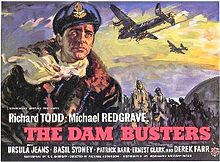
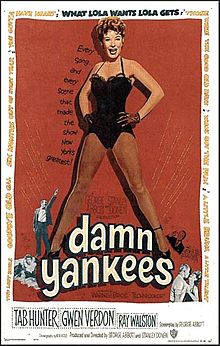


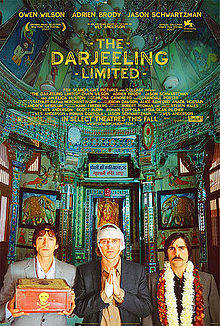


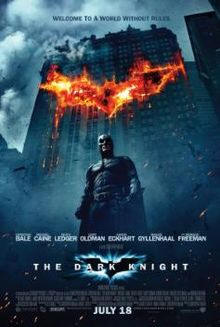
_poster.jpg)
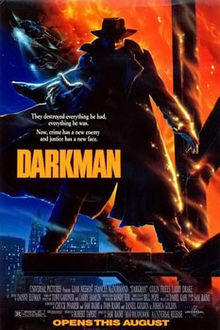
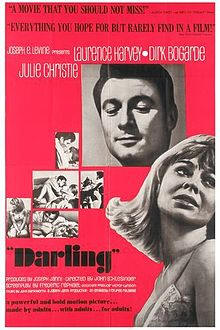
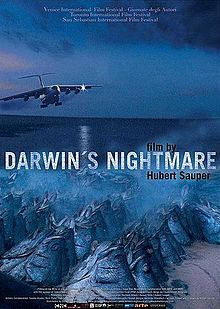
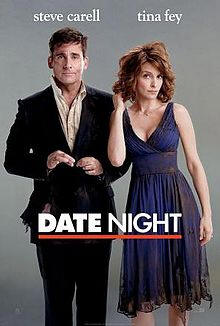
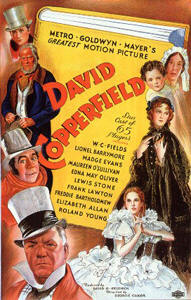
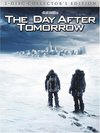
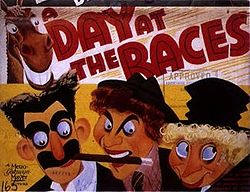

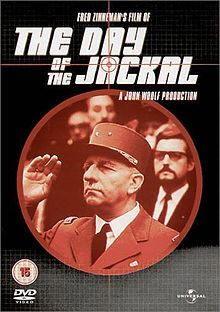
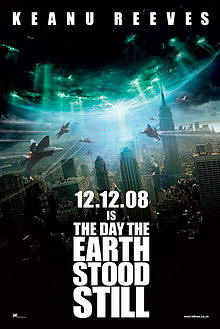
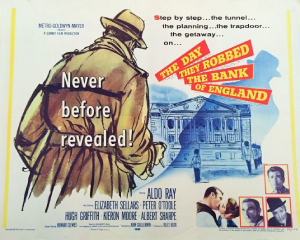

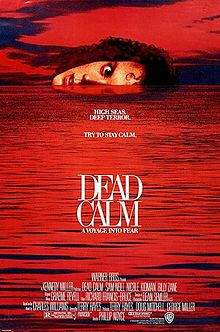
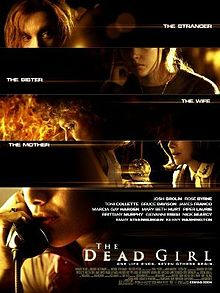
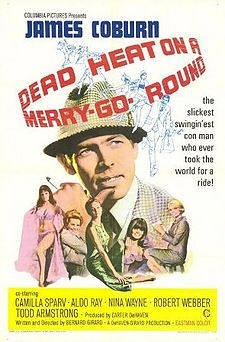

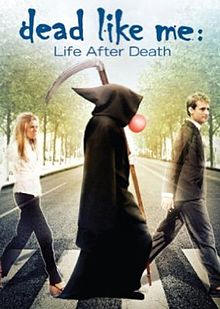
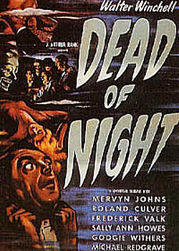

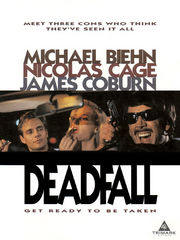
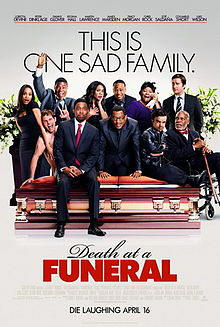
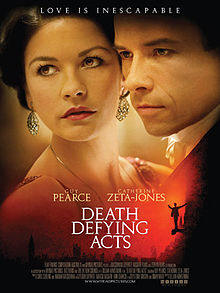
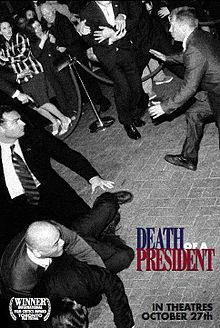
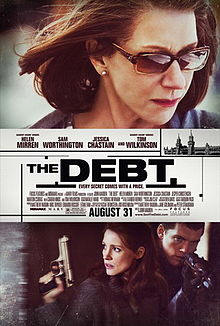


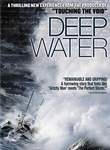
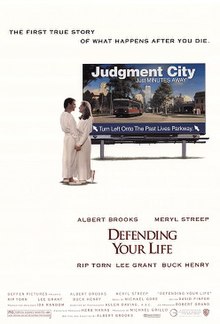
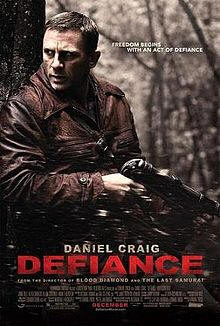
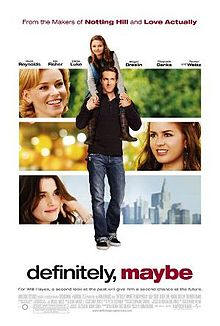

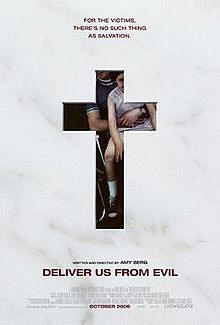
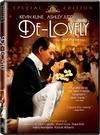

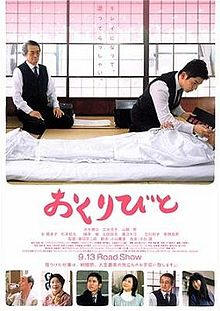

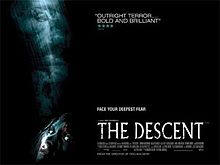

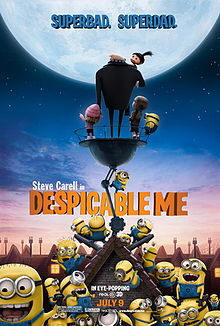
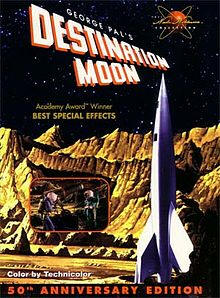
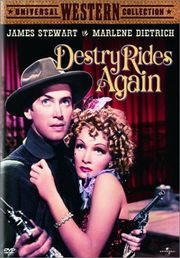
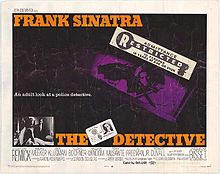
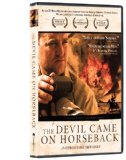


.jpg/220px-The_Devil's_Disciple_(1959_film).jpg)
